It’s a busy time of year right now with all the decorating, gift-buying, and holiday food prep–it’s a good thing my wife’s got all that covered so I can finally bring you some AZ stories. Actually, writing the annual Christmas letter is about my only task this time of year, and much to my wife’s chagrin, this remains a grossly unfinished task. Please don’t tell my wife I’m blogging right now.
So where were we with AZ? Oh yes, our family had departed Green Valley after a two-day stay and were about to go on a loop tour around the Santa Ritas, heading down to Nogales and back up through Patagonia and Sonoita. There were only a couple birds on the agenda for the day. The first (and also most exciting prospect) was checking on a Barn Owl day roost–somewhere in southern Arizona. 🙂 For some reason, Evan has latched on to this species and was one he really wanted to see. He’ll refer to it by its scientific name, Tyto alba, and he’s been known to play its blood-curdling scream on his iPod in our house.
Once we got to the Owl’s roost, I walked up to this tower of sorts and looked up into the rafters. Immediately I locked eyes with my Barn Owl lifer, tucked way up in the shadows! Just as I started to point it out to Evan and my dad, the Barn Owl flushed out of the opening right toward us! Of course I wasn’t ready with the camera, but our looks at this Owl were hard to beat. Evan, bug-eyed, said in an astonished voice, “Whoa, Tyto alba just flew right by me!”
With no photo, the sighting was bittersweet for me. But a Barn Owl seen is way better than no Barn Owl, so off to Patagonia we went. In this city (and southern AZ in general), birders are the norm and not the nerd-freaks that people think of us in other places:
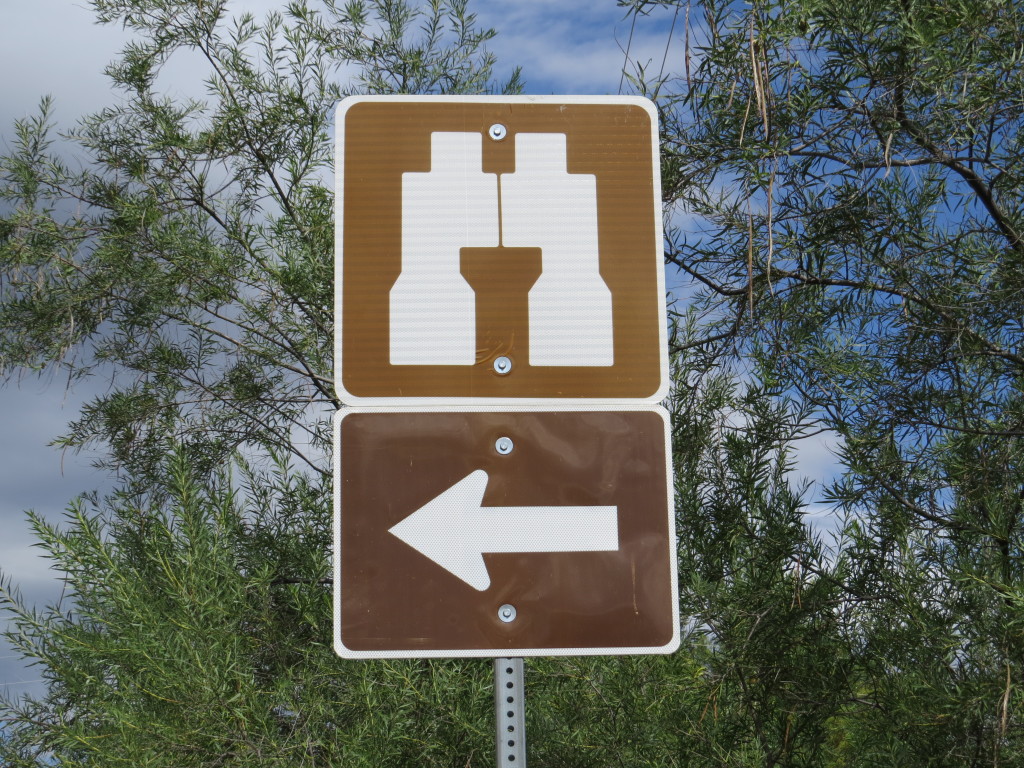
Patagonia is hallowed birding ground where all kinds of birding myths and legends originate. In fact, a famous birding phenomenon known as the Patagonia Picnic Table Effect was coined from something remarkable that happened here that has also played out numerous times in many other locations. Here’s the PPTE in a nutshell: some birders in the 1970s stopping for lunch in Patagonia discovered a rare bird which brought in more birders who discovered more rare birds in that location. Whenever I find a rarity, I always hope it’s the beginning of the Patagonia Picnic Table Effect. Needless to say, Patagonia is a place I have longed to visit after reading about it in books.
Despite the fact that the PPTE is based on multiple rarities and despite the fact that we were actually in Patagonia, I was after one bird at one very famous location:
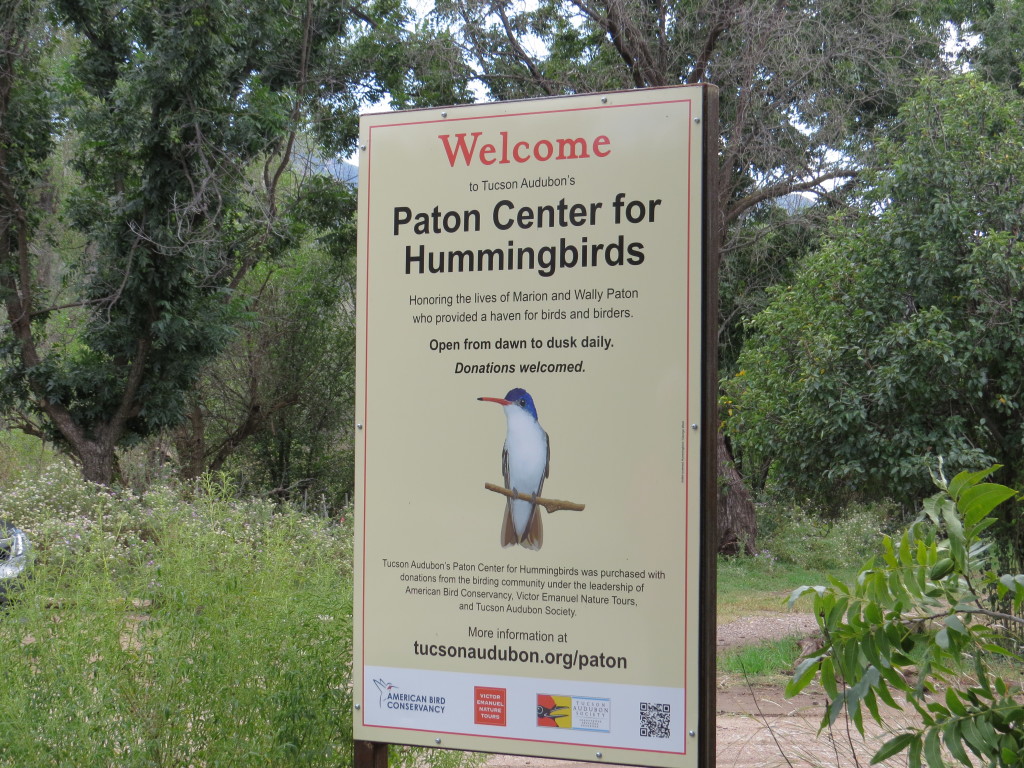 The famous Paton House–hard to believe I was actually here.
The famous Paton House–hard to believe I was actually here.
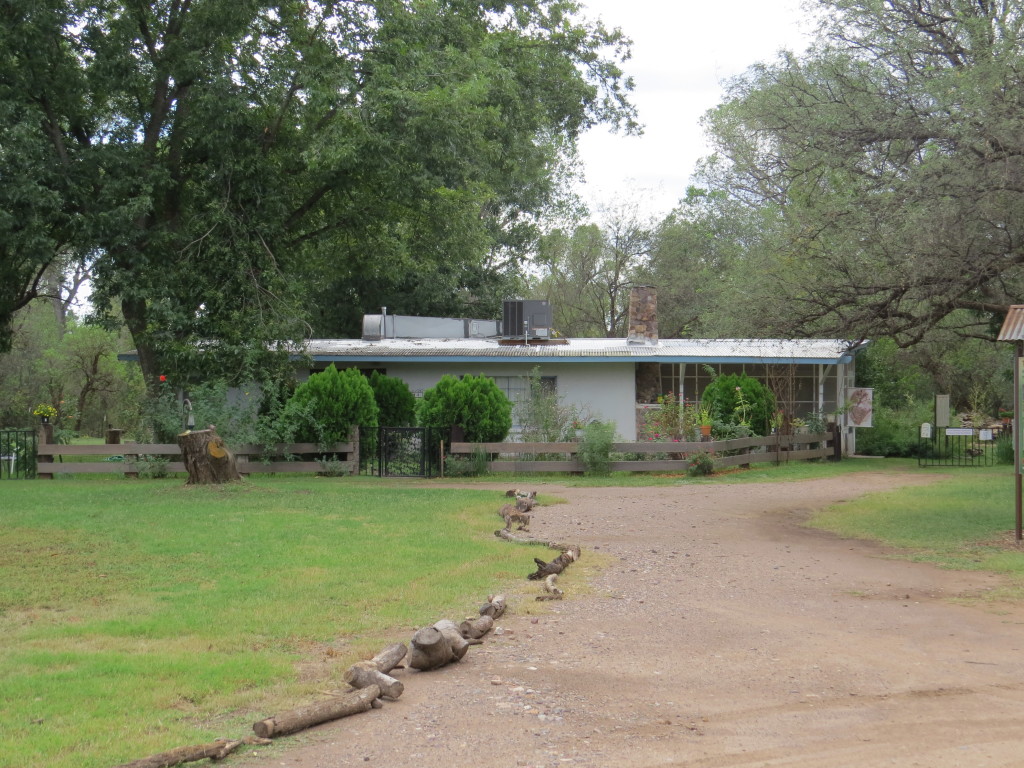 No, we didn’t come for the common White-winged Doves, though they were dapper and only the second time we’d seen one.
No, we didn’t come for the common White-winged Doves, though they were dapper and only the second time we’d seen one.
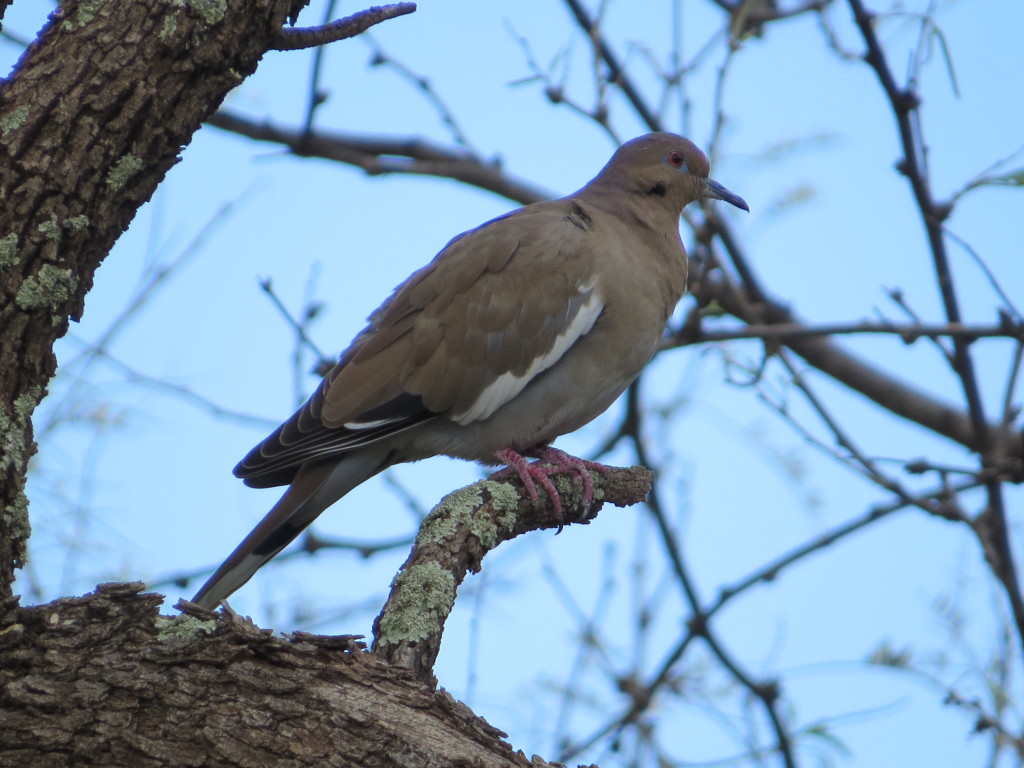 Nor did we come for the WWDO’s cousin, the much less abiding Inca Dove.
Nor did we come for the WWDO’s cousin, the much less abiding Inca Dove.
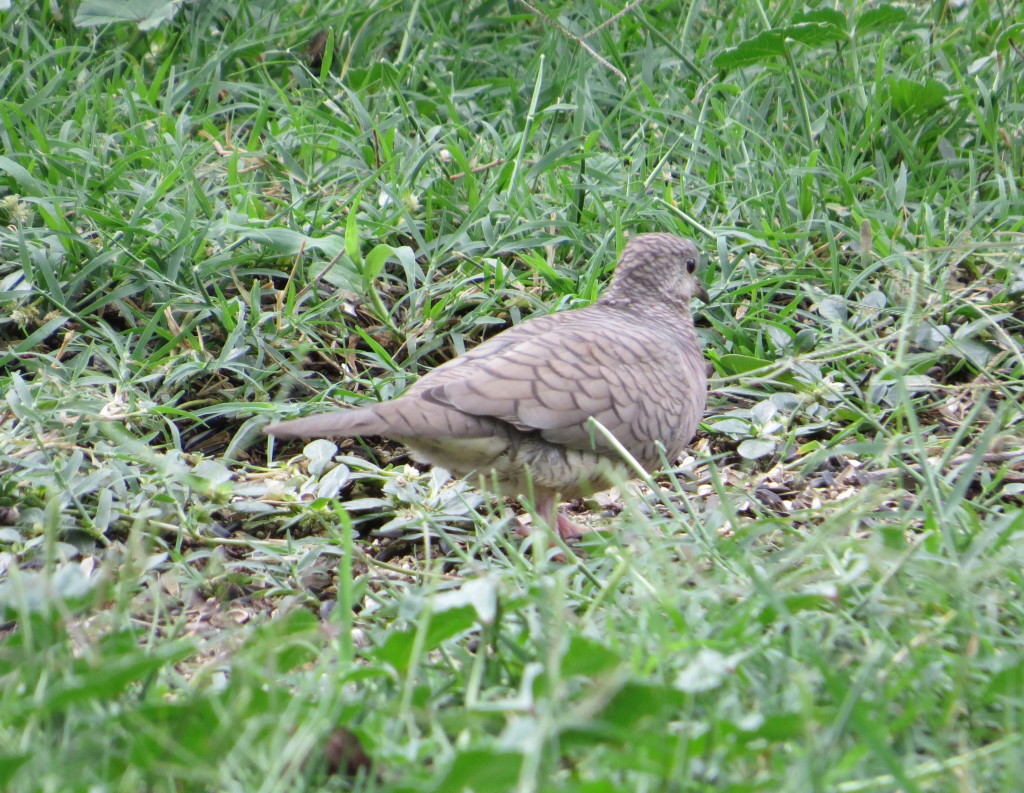 It was nice to see a Black-headed Grosbeak even if it was a bit scruffy looking, but that’s still not why we came.
It was nice to see a Black-headed Grosbeak even if it was a bit scruffy looking, but that’s still not why we came.
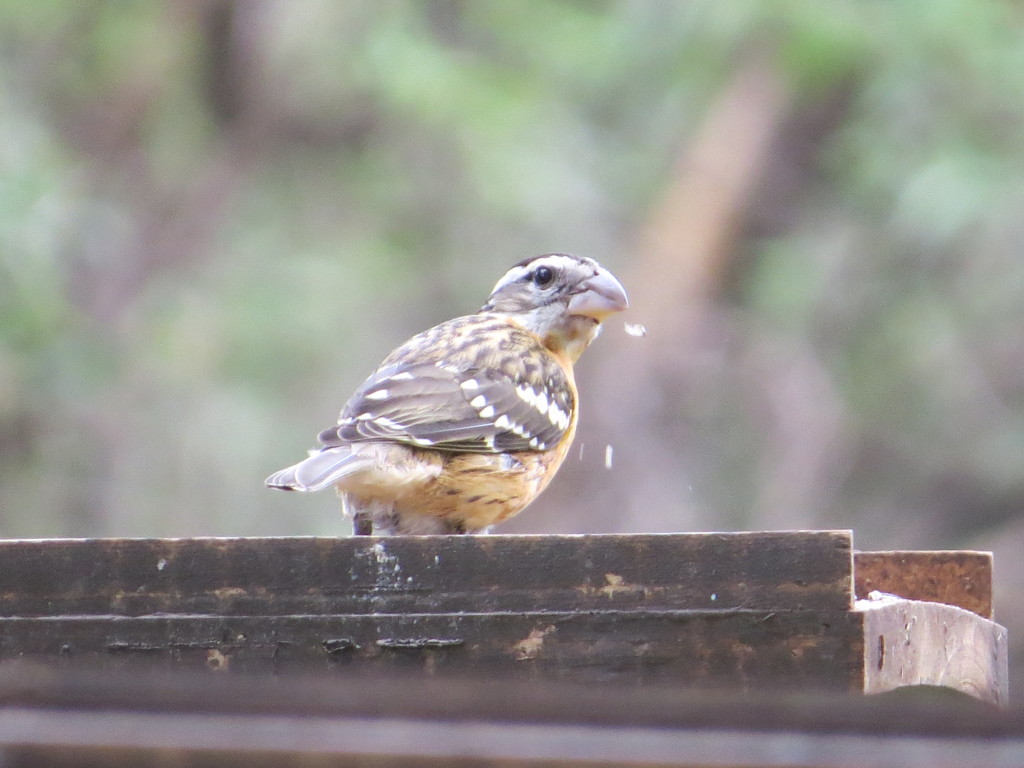
I very much enjoyed up-close looks at my first MALE Gila Woodpecker–still not why we came though.
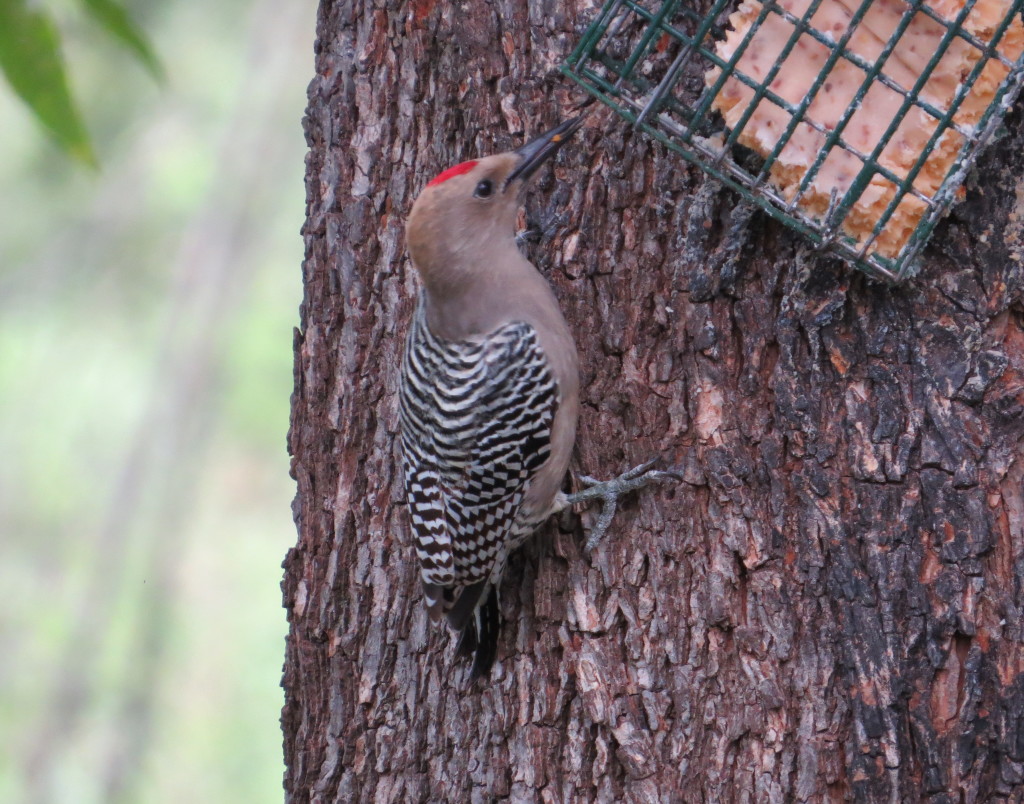 We came for the Hummingbirds. But not for the Broad-billed.
We came for the Hummingbirds. But not for the Broad-billed.
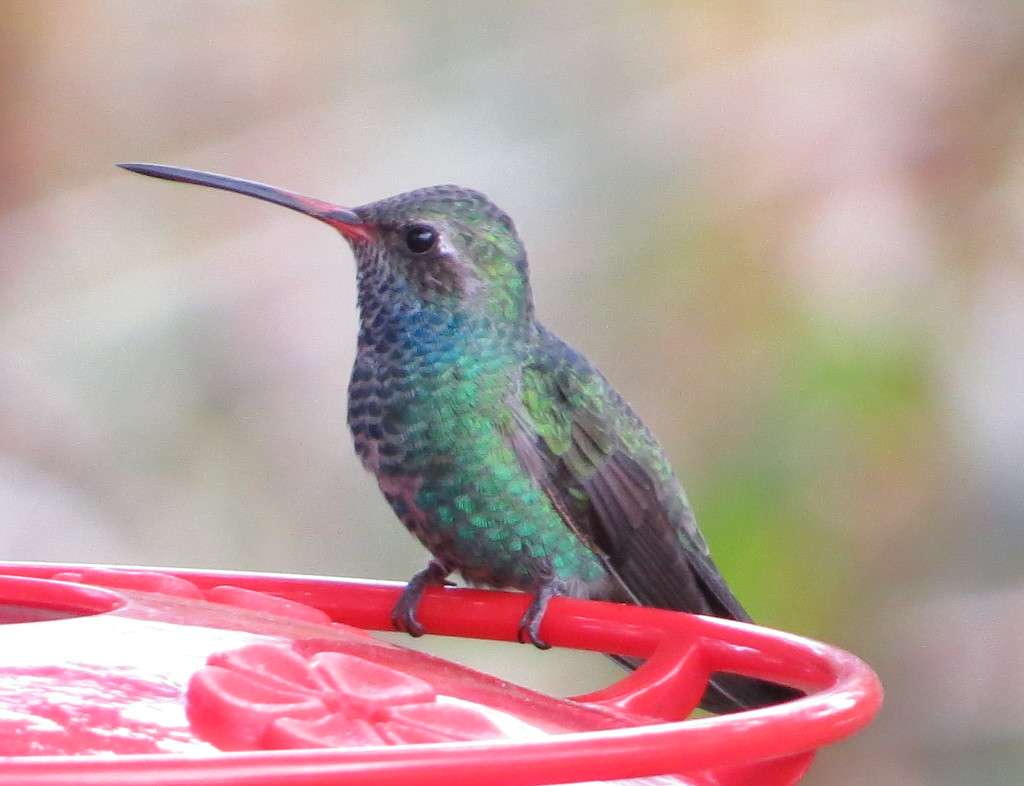
Sorry, this teasing is annoying, especially since you knew from the first photo that the main attraction is the Violet-crowned Hummingbird. Like so many birders before us, we made our pilgrimage to Patons’ just to add this key lifer. Good thing we saw one.
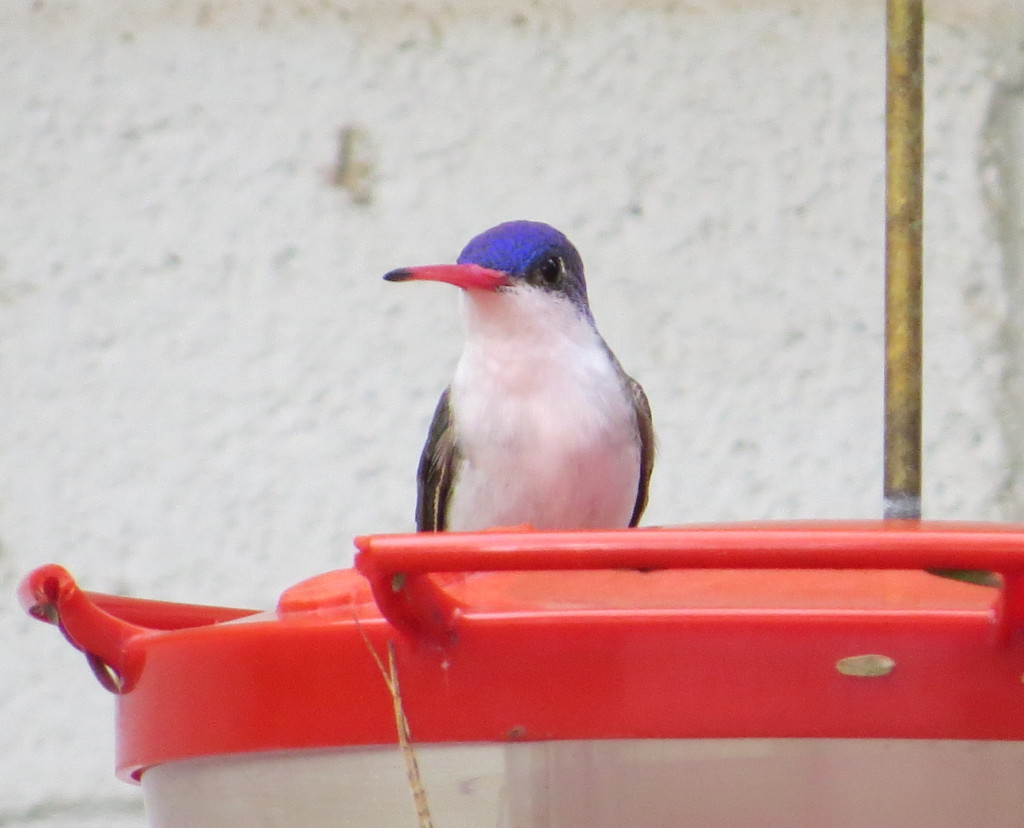 Ain’t it a beaut?
Ain’t it a beaut?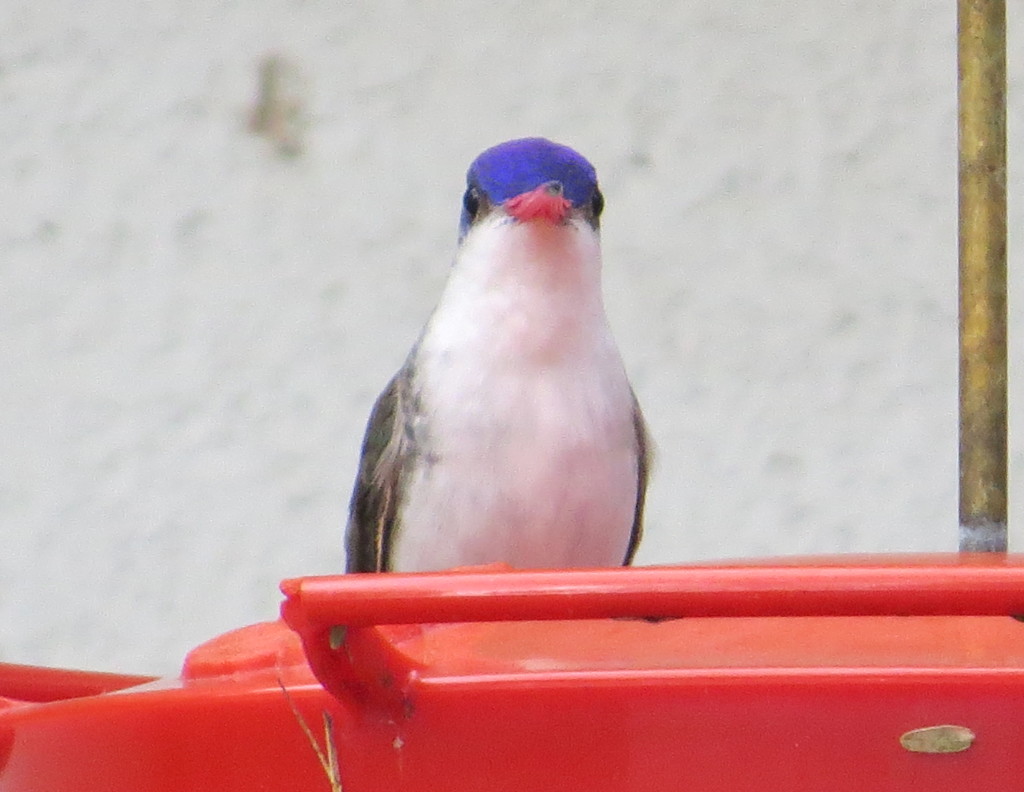 It knows it too. Like Orcas or Dolphins, it pandered to its gawking audience.
It knows it too. Like Orcas or Dolphins, it pandered to its gawking audience.
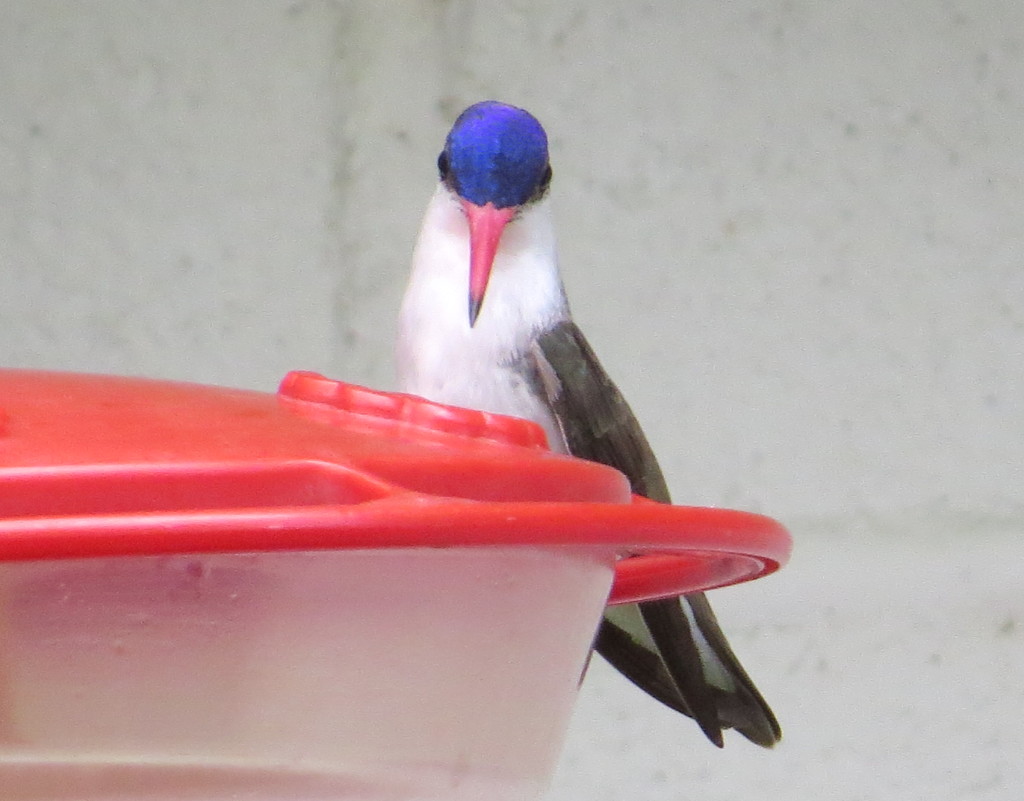 So that was that. Tommy DeBardeleben and Gordon Karre had told me about a much rarer Hummer, the Plain-capped Starthroat, that had been seen regularly somewhere in Patagonia. Not knowing exactly where to go for it and not feeling I could make yet another birding stop with the non-birding family, I didn’t even bother to check into it.
So that was that. Tommy DeBardeleben and Gordon Karre had told me about a much rarer Hummer, the Plain-capped Starthroat, that had been seen regularly somewhere in Patagonia. Not knowing exactly where to go for it and not feeling I could make yet another birding stop with the non-birding family, I didn’t even bother to check into it.
Instead, my family and I ate lunch at a park in Patagonia after a successful trip to Patons’. It wasn’t until we were somewhere past Sonoita that it dawned on me–we ate lunch at a real life Patagonia picnic table. And ironically, I don’t recall seeing/hearing a single bird in that park while we ate. Back to that Plain-capped Starthroat, I also didn’t realize until we got home that we had driven within a block of that ultra-rare Mexican bird. I probably could have stopped to watch a feeder for a bit and not wrecked the family’s travel schedule. I am sure this will haunt me for years, possibly decades.
Moving on, we finally made it back to Maricopa. Before we got to my parents’ house, though, we had to check up on a couple of old friends in my parents’ neighborhood. Love this guy (or gal–there’s one of each).
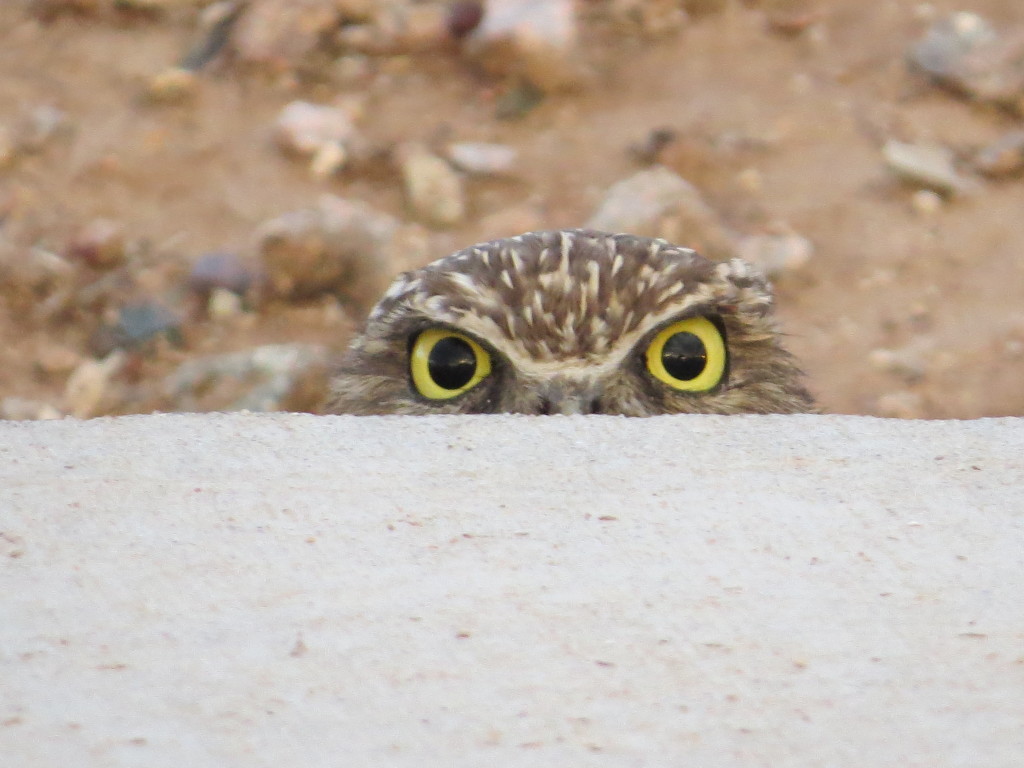 Scanning a residential pond in the low light of the evening, I was excited to see the brilliant pop of color of the male Vermilion Flycatcher in my binoculars. They never get old.
Scanning a residential pond in the low light of the evening, I was excited to see the brilliant pop of color of the male Vermilion Flycatcher in my binoculars. They never get old.
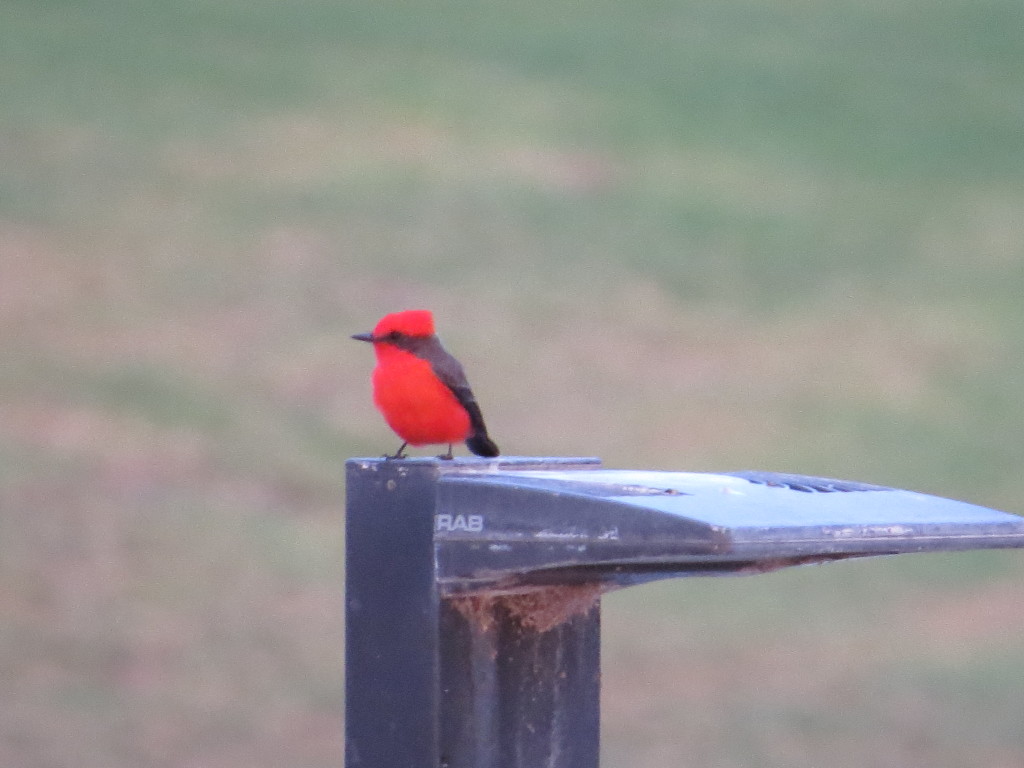 We also saw a Jackrabbit of some sort which was a cool experience.
We also saw a Jackrabbit of some sort which was a cool experience.
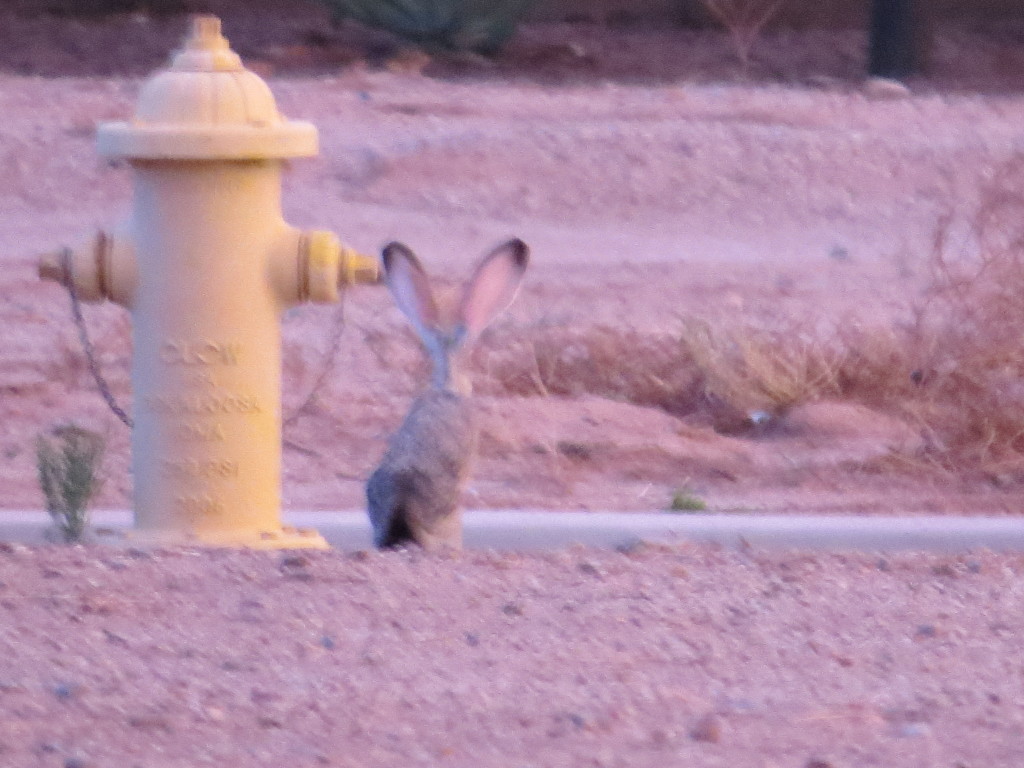 The Arizona fun isn’t over. Next up is the final post and arguably the ugliest and cutest birds you will see.
The Arizona fun isn’t over. Next up is the final post and arguably the ugliest and cutest birds you will see.

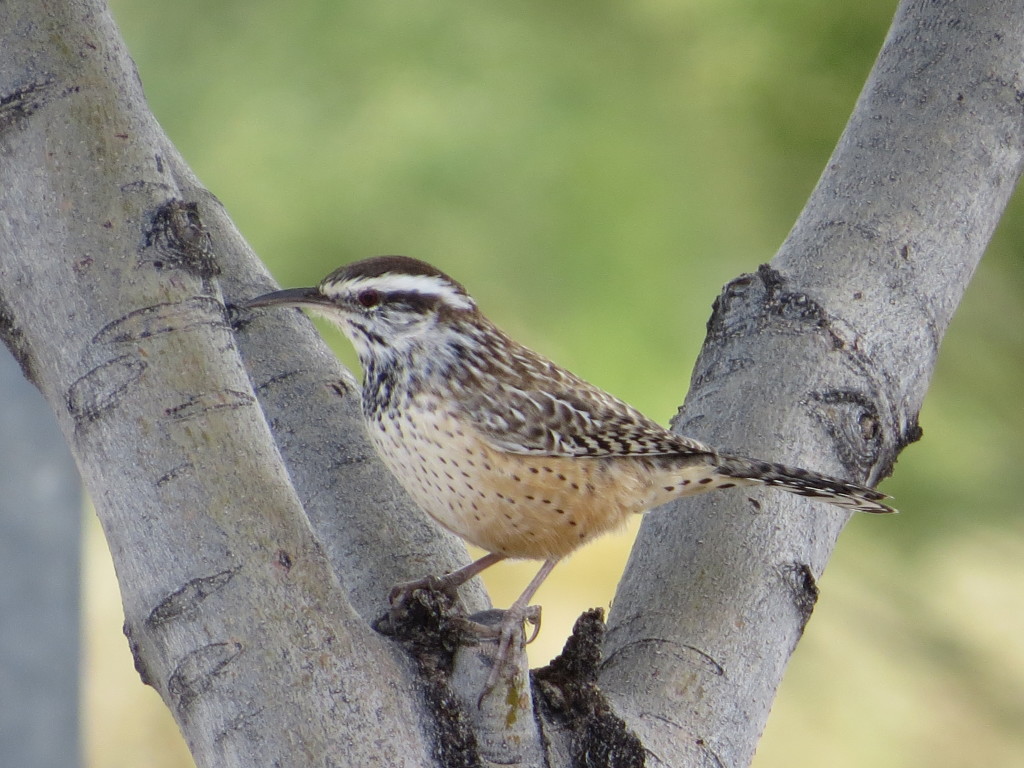
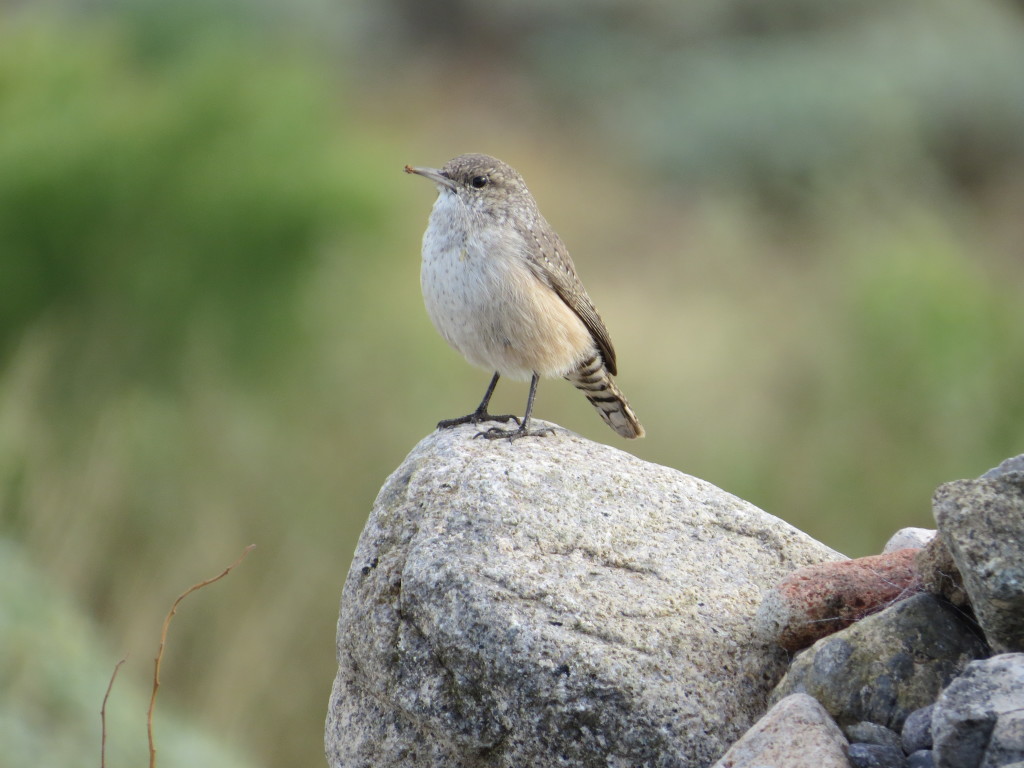 I really, really like the pot-bellied appearance of this bird. This may be my favorite photo from the trip. And is it just me, or does ROWR bear an uncanny resemblance to our 27th President?
I really, really like the pot-bellied appearance of this bird. This may be my favorite photo from the trip. And is it just me, or does ROWR bear an uncanny resemblance to our 27th President?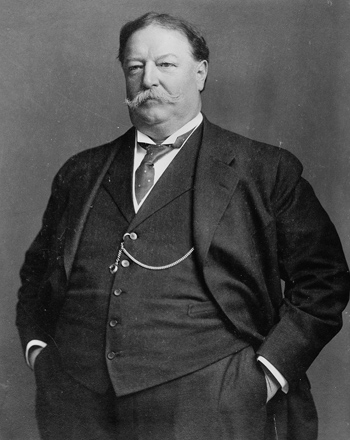
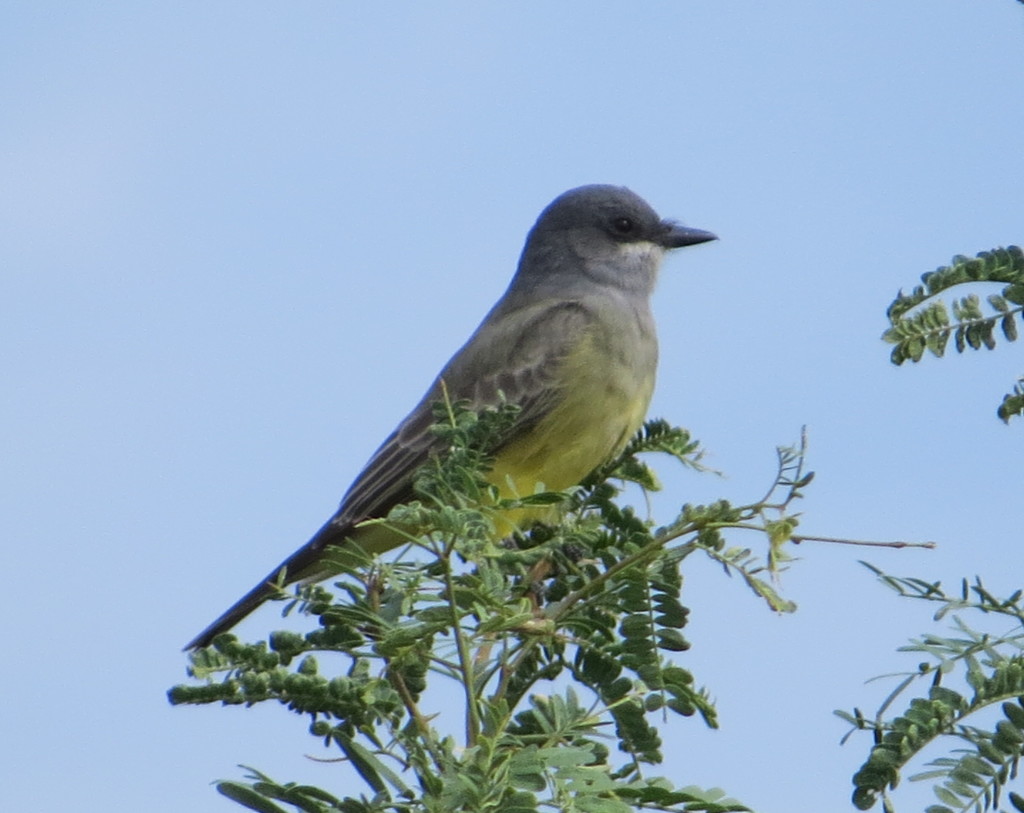
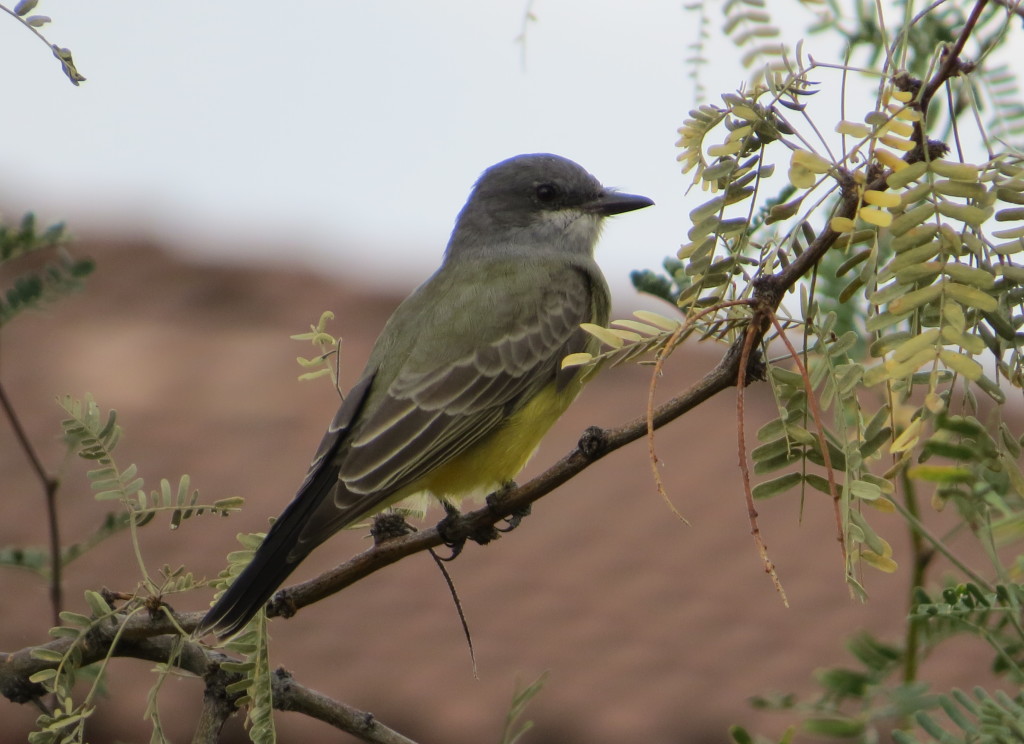 High on two completely unexpected lifers, I continued to scope out the fun birds around the hotel, not the least of which were numerous Lark Sparrows. I have not seen enough Lark Sparrows yet.
High on two completely unexpected lifers, I continued to scope out the fun birds around the hotel, not the least of which were numerous Lark Sparrows. I have not seen enough Lark Sparrows yet.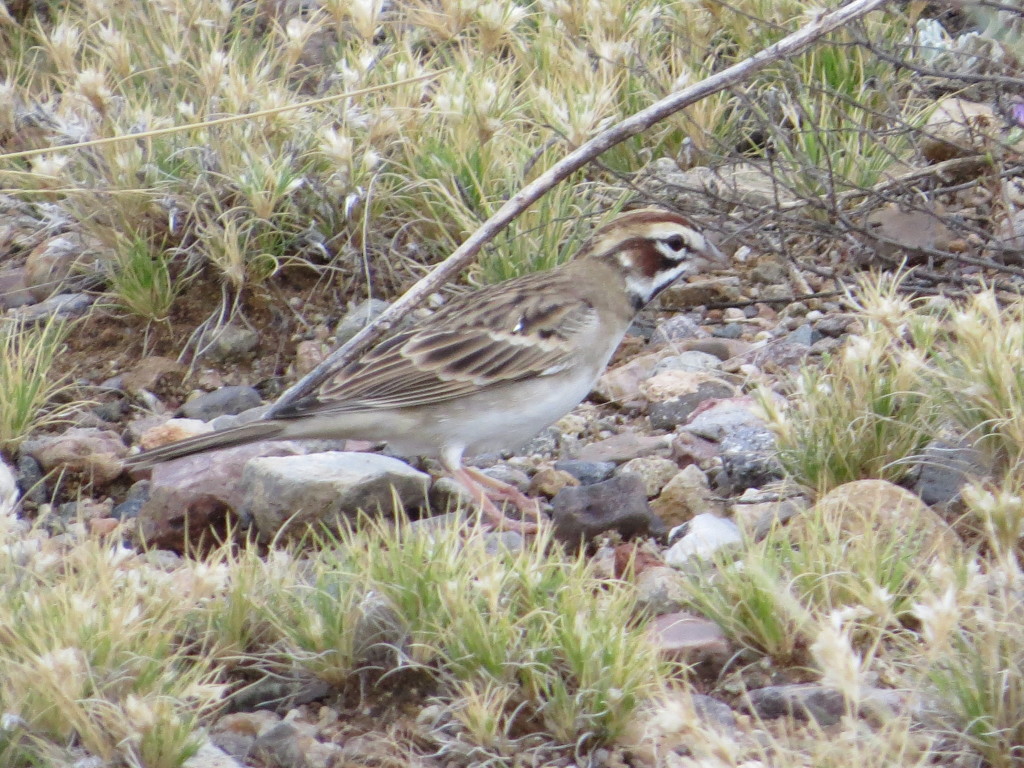 What I have seen plenty of in recent years are Say’s Phoebes, and I already have plenty of photos to prove it. But these birds just know how to pose…
What I have seen plenty of in recent years are Say’s Phoebes, and I already have plenty of photos to prove it. But these birds just know how to pose…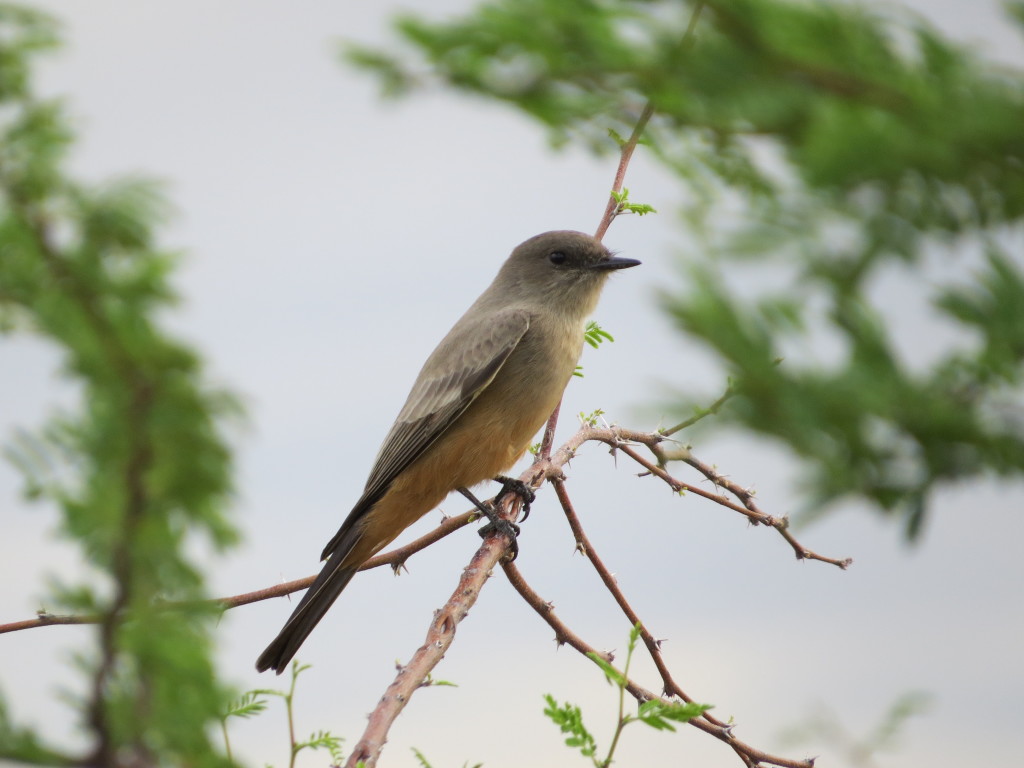 It was also fun to see a prickly-looking Curve-billed Thrasher. I’m glad they didn’t choose him for state bird.
It was also fun to see a prickly-looking Curve-billed Thrasher. I’m glad they didn’t choose him for state bird.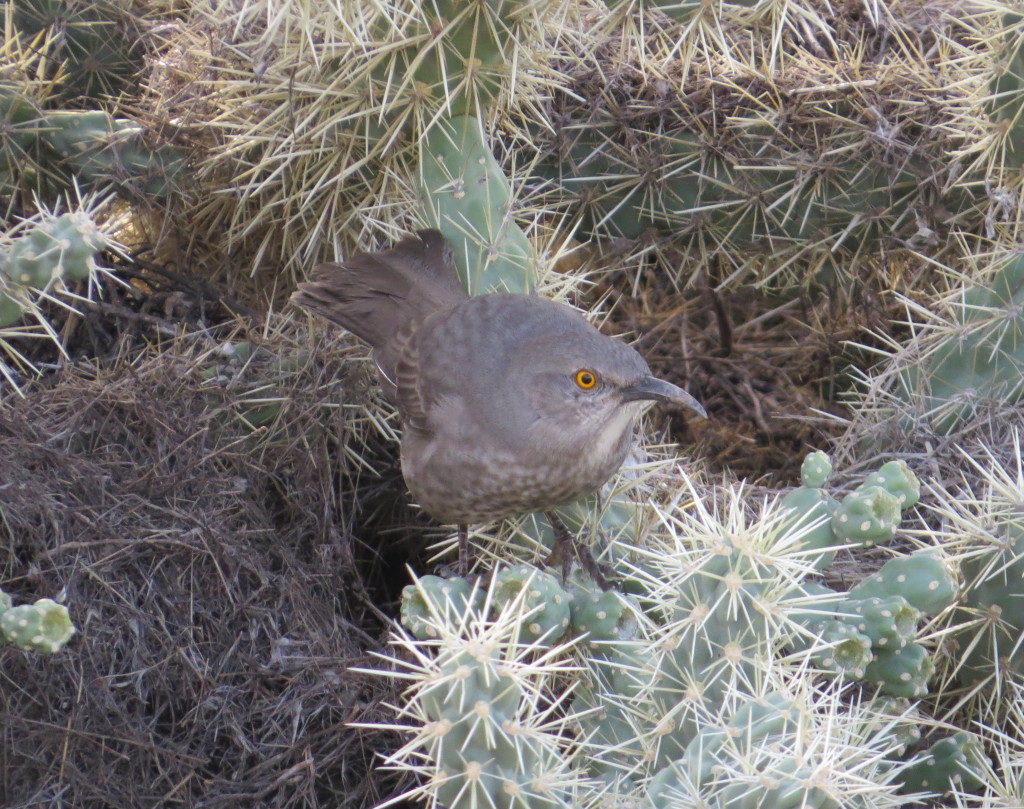
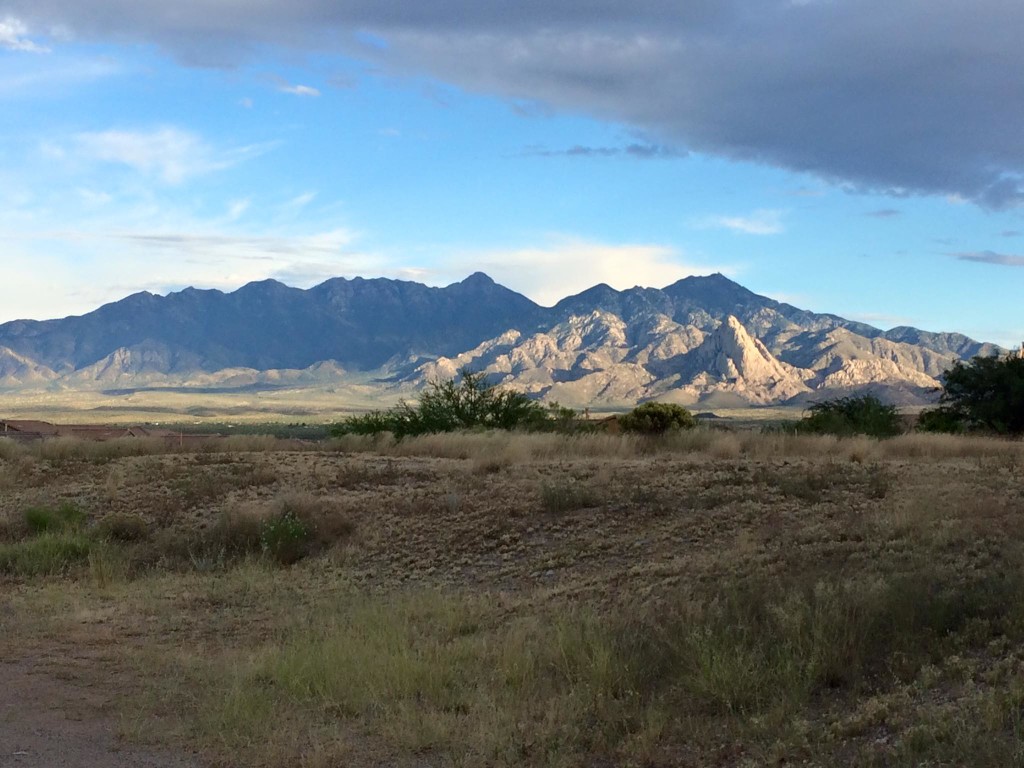
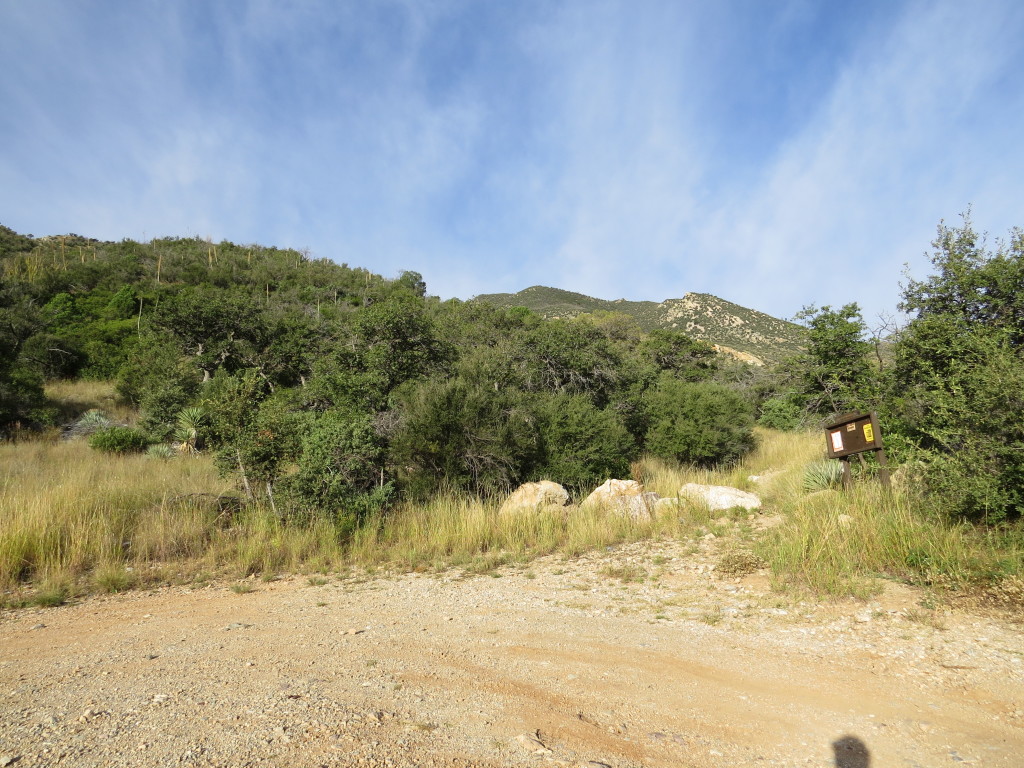
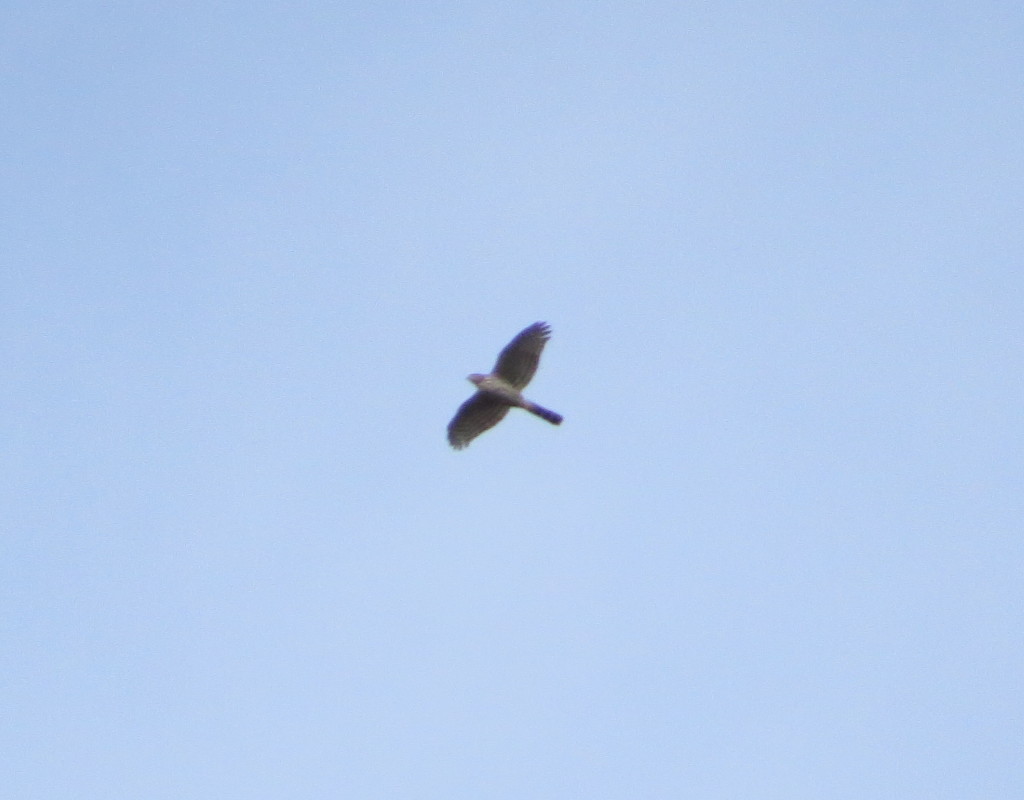
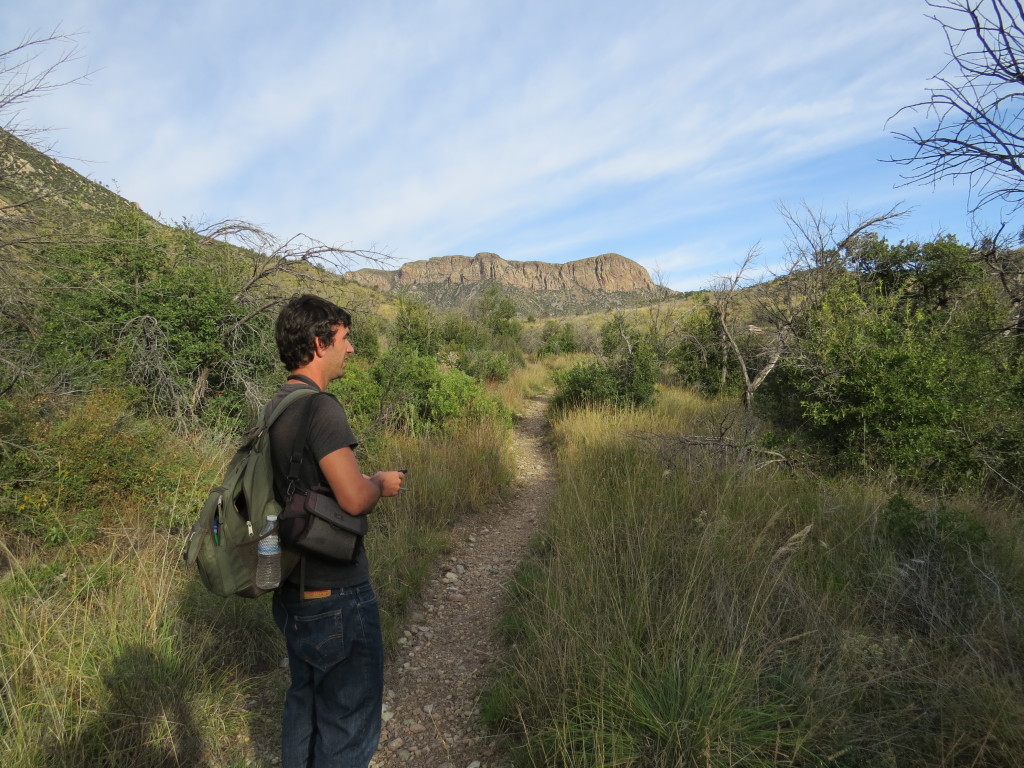 Tommy’s ear for bird sounds is truly impressive–hardly a chip note, flight call, or song gets by him. In fact, he doesn’t even announce all that he’s hearing unless it’s important, like this lifer Bewick’s Wren.
Tommy’s ear for bird sounds is truly impressive–hardly a chip note, flight call, or song gets by him. In fact, he doesn’t even announce all that he’s hearing unless it’s important, like this lifer Bewick’s Wren.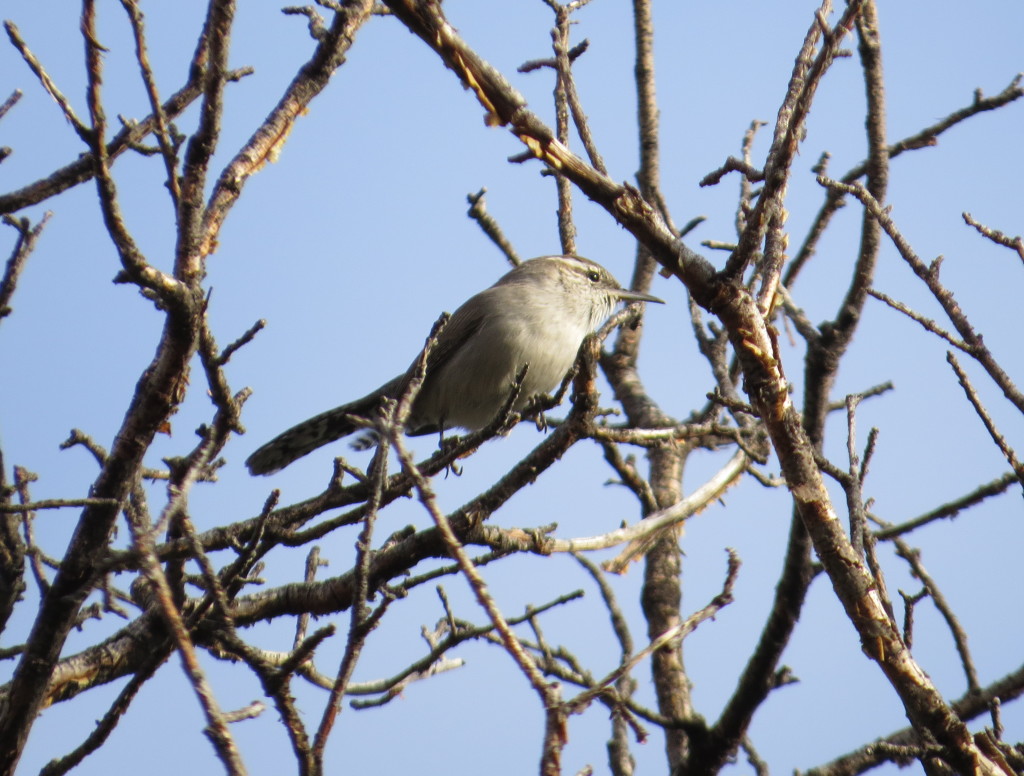
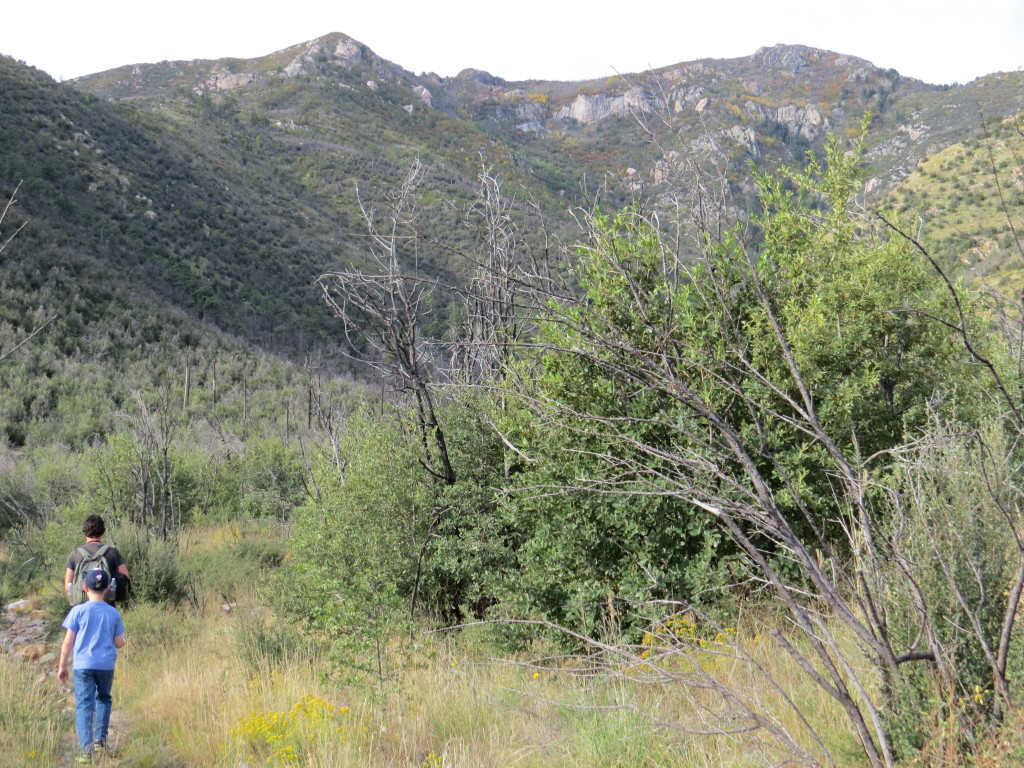 It is where this lowland scrub terminates and the forest of the canyon begins that the Slate-throated Redstart had been seen just a couple days prior. We paused to look and listen, but it seemed well-known at this point that the Redstart was gone. We did, however, start to hear multiple Rufous-capped Warblers all around us! Getting a visual of this brush-loving bird is another story. The sound seemed to come from everywhere and then stopped all of the sudden. Weird. So onward and upward we kept going. At least the view back down the mountain was nice.
It is where this lowland scrub terminates and the forest of the canyon begins that the Slate-throated Redstart had been seen just a couple days prior. We paused to look and listen, but it seemed well-known at this point that the Redstart was gone. We did, however, start to hear multiple Rufous-capped Warblers all around us! Getting a visual of this brush-loving bird is another story. The sound seemed to come from everywhere and then stopped all of the sudden. Weird. So onward and upward we kept going. At least the view back down the mountain was nice.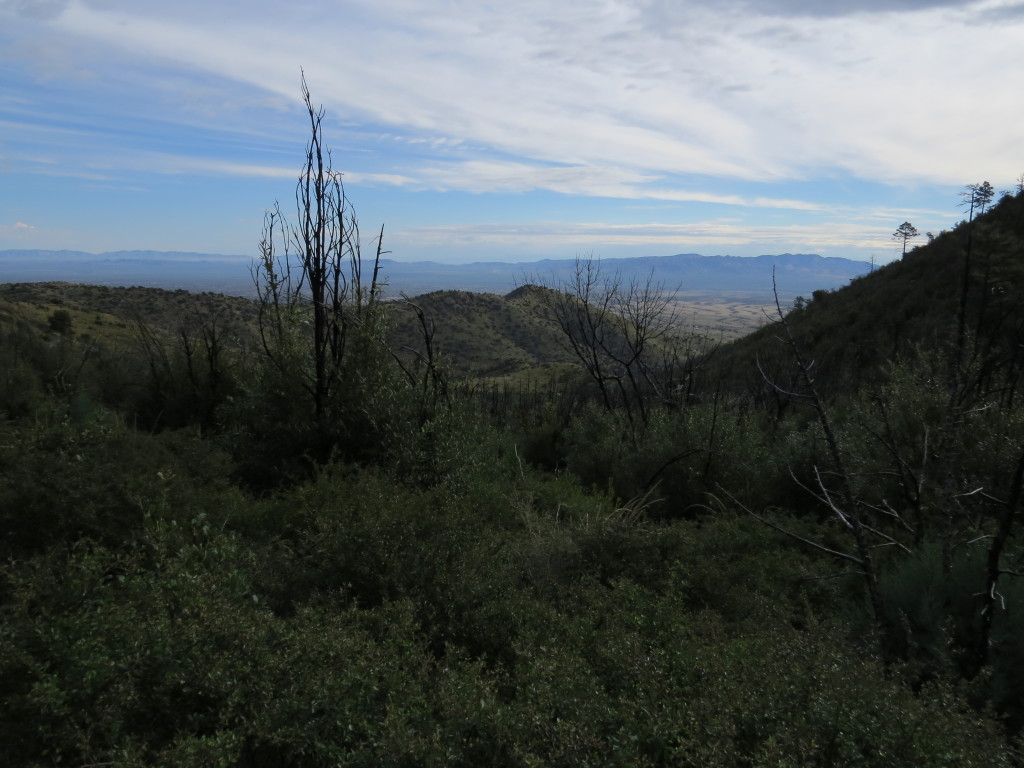
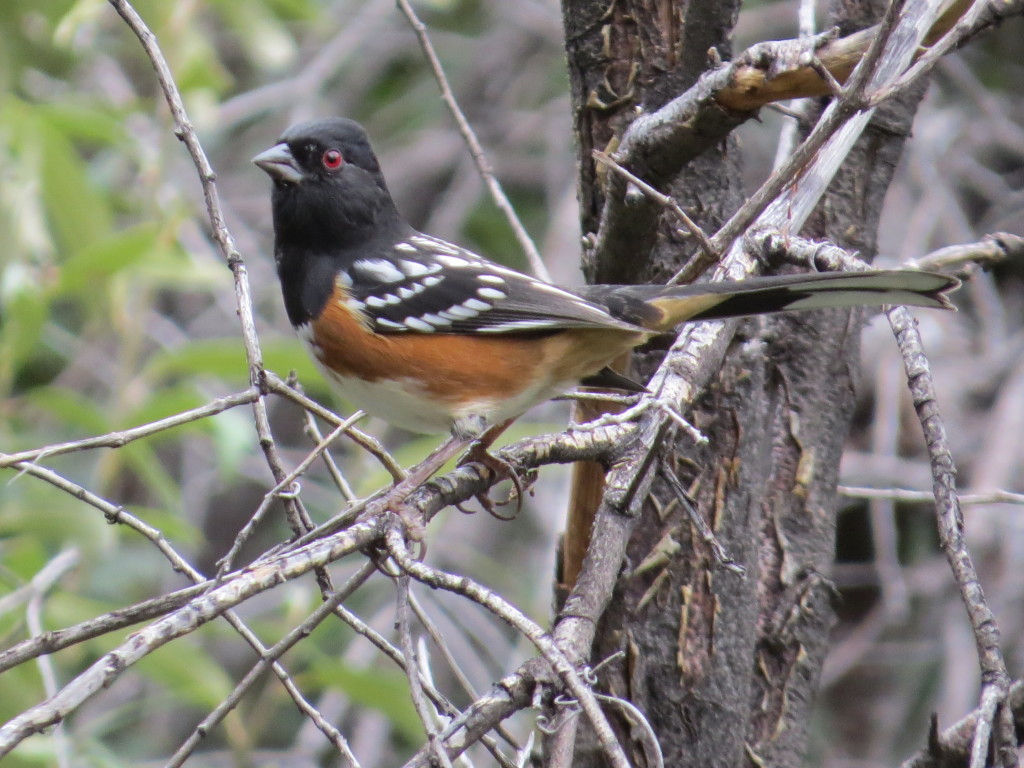 In hindsight, this was the calm before the storm because things took off in a hurry. It all started when Tommy spotted a male Hepatic Tanager which was a lifer for Evan and me. I didn’t see it, but I spotted my own Hepatic lifer (female).
In hindsight, this was the calm before the storm because things took off in a hurry. It all started when Tommy spotted a male Hepatic Tanager which was a lifer for Evan and me. I didn’t see it, but I spotted my own Hepatic lifer (female).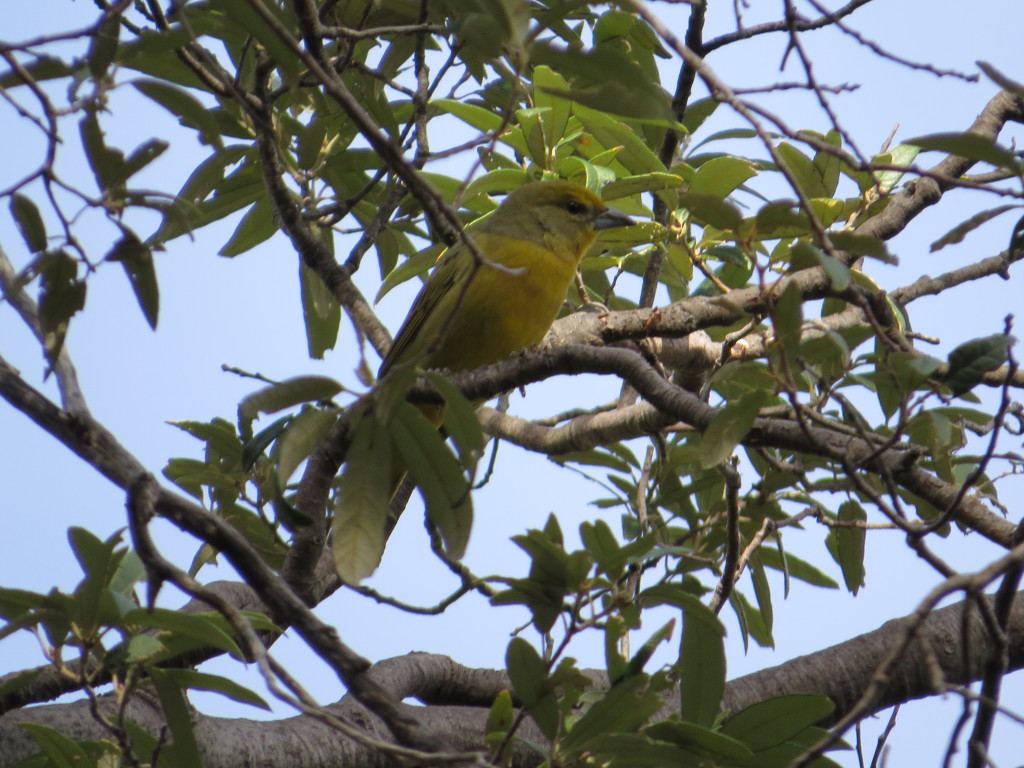 I really wanted to see the male Tommy found. Eventually I saw it, but it was not being cooperative at all.
I really wanted to see the male Tommy found. Eventually I saw it, but it was not being cooperative at all.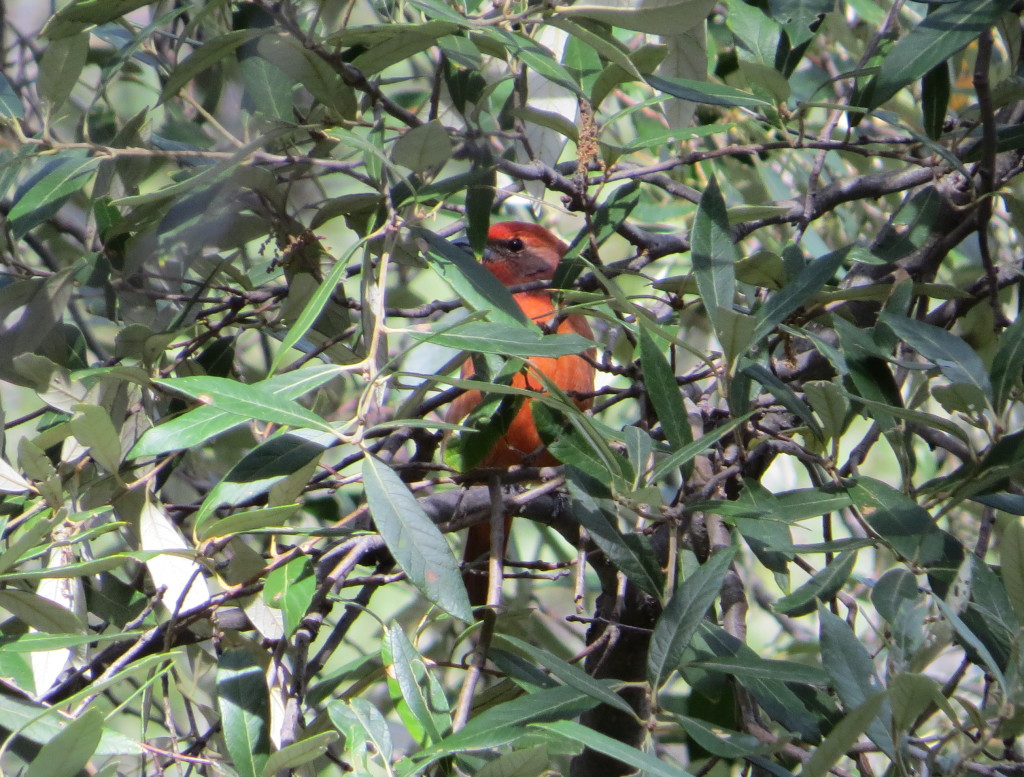
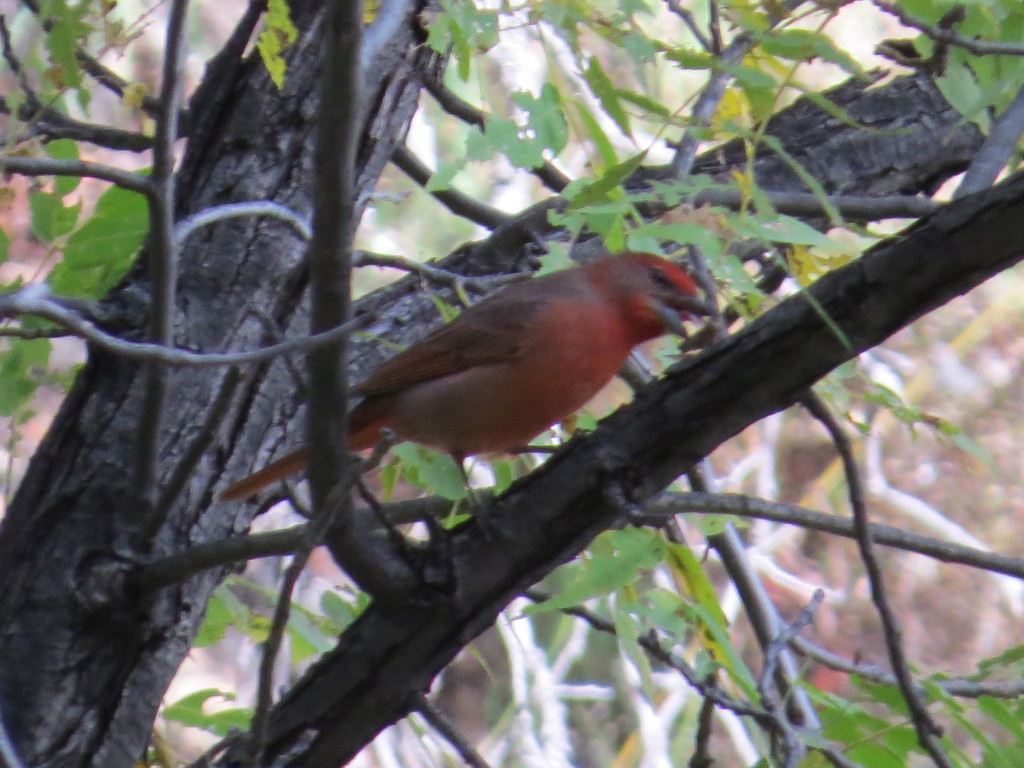 Tommy said that sometimes Tanagers will respond to a Northern Pygmy-Owl call. When he played it, a live Pygmy-Owl tooted back! Tommy took off up the canyon trail to see if he could locate it. I started soon after but then saw bright flash of yellow and black come across the blue sky–Scott’s Oriole! What a looker it was! It landed at the very top of a tree offering me nothing but butt views. It’s a pretty nice-looking butt, anyhow.
Tommy said that sometimes Tanagers will respond to a Northern Pygmy-Owl call. When he played it, a live Pygmy-Owl tooted back! Tommy took off up the canyon trail to see if he could locate it. I started soon after but then saw bright flash of yellow and black come across the blue sky–Scott’s Oriole! What a looker it was! It landed at the very top of a tree offering me nothing but butt views. It’s a pretty nice-looking butt, anyhow.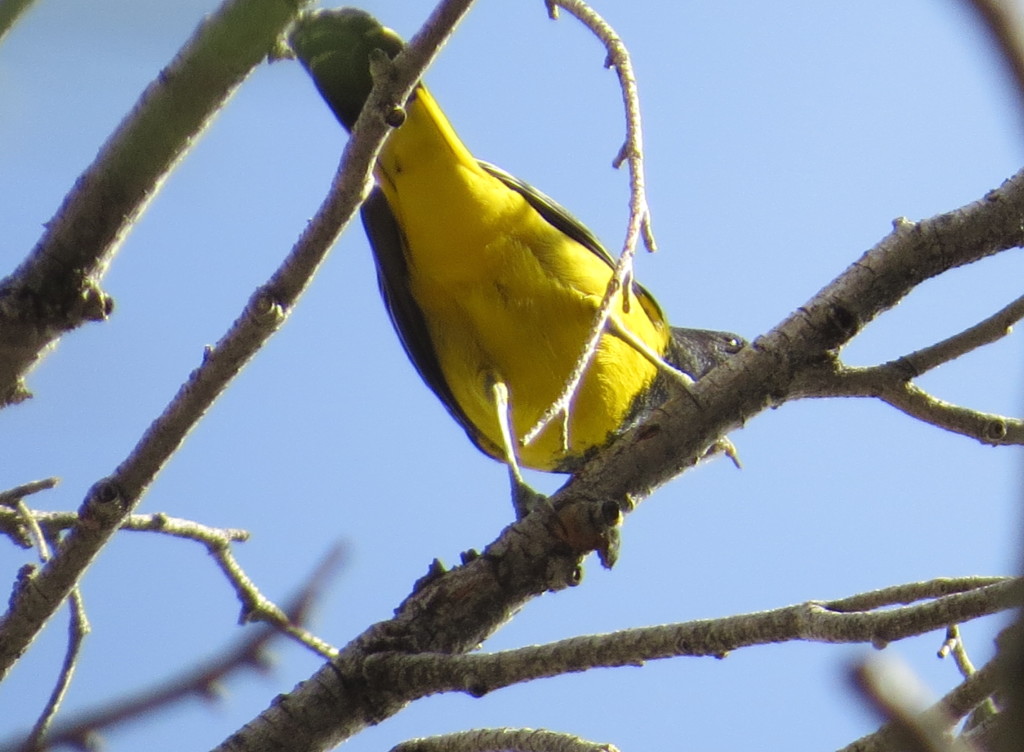 As I was jockeying for a position from which I could see the Oriole better, Tommy called out calmly, “Guys, Pygmy-Owl.” For some reason I thought this meant he was hearing it, and so I continued to keep working on the Oriole. A few seconds later, Tommy’s voice carried a little more urgency. An Owl lifer trumps an Oriole photo. Evan, Gordon, and I hustled up to where Tommy was. Sure enough, he had eyes on it. Wow, just wow.
As I was jockeying for a position from which I could see the Oriole better, Tommy called out calmly, “Guys, Pygmy-Owl.” For some reason I thought this meant he was hearing it, and so I continued to keep working on the Oriole. A few seconds later, Tommy’s voice carried a little more urgency. An Owl lifer trumps an Oriole photo. Evan, Gordon, and I hustled up to where Tommy was. Sure enough, he had eyes on it. Wow, just wow.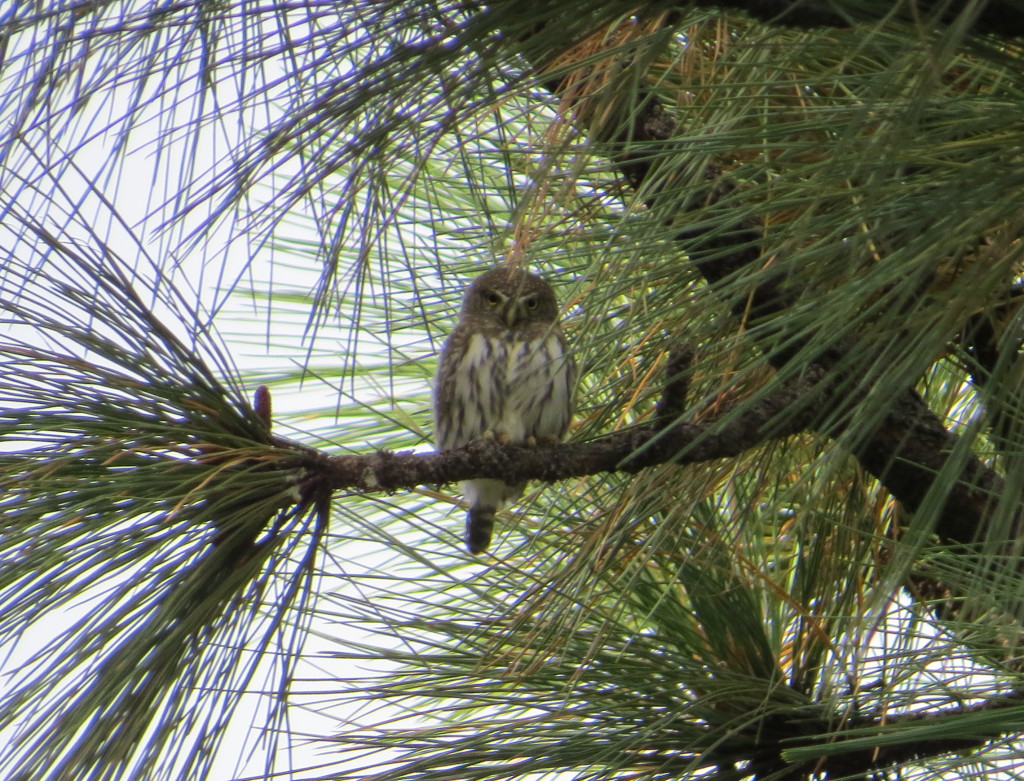
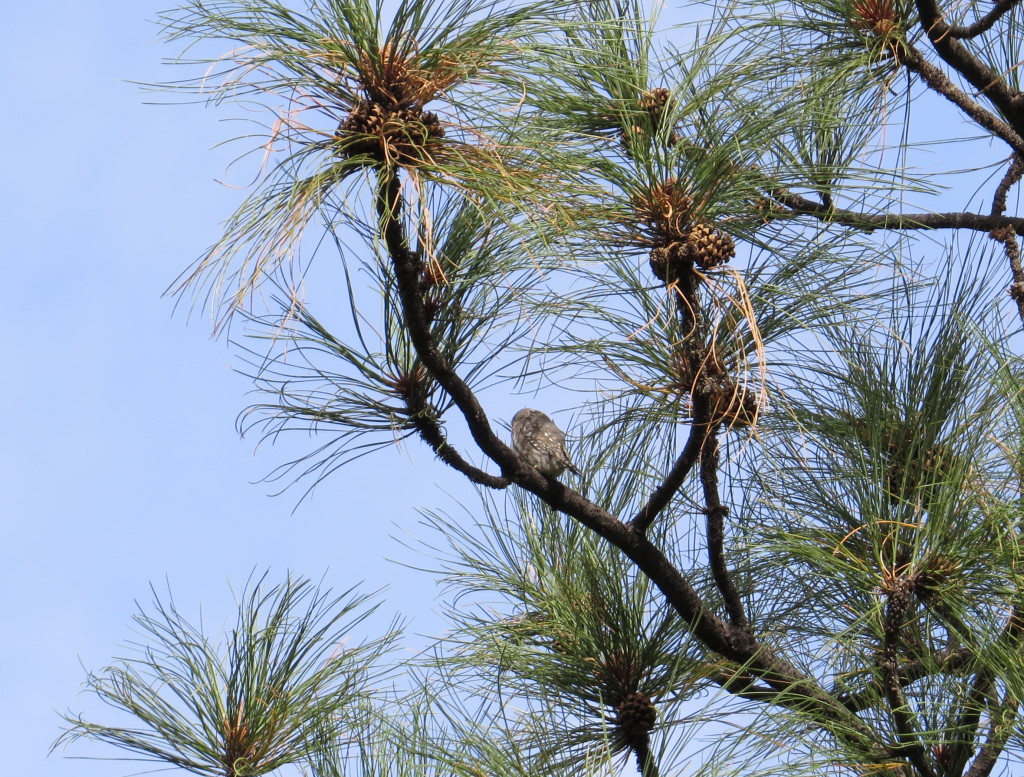 This was such a fun life bird. I was not expecting this one on this trip. Excuse the numerous photos–I was, and still am, very excited about this sighting.
This was such a fun life bird. I was not expecting this one on this trip. Excuse the numerous photos–I was, and still am, very excited about this sighting.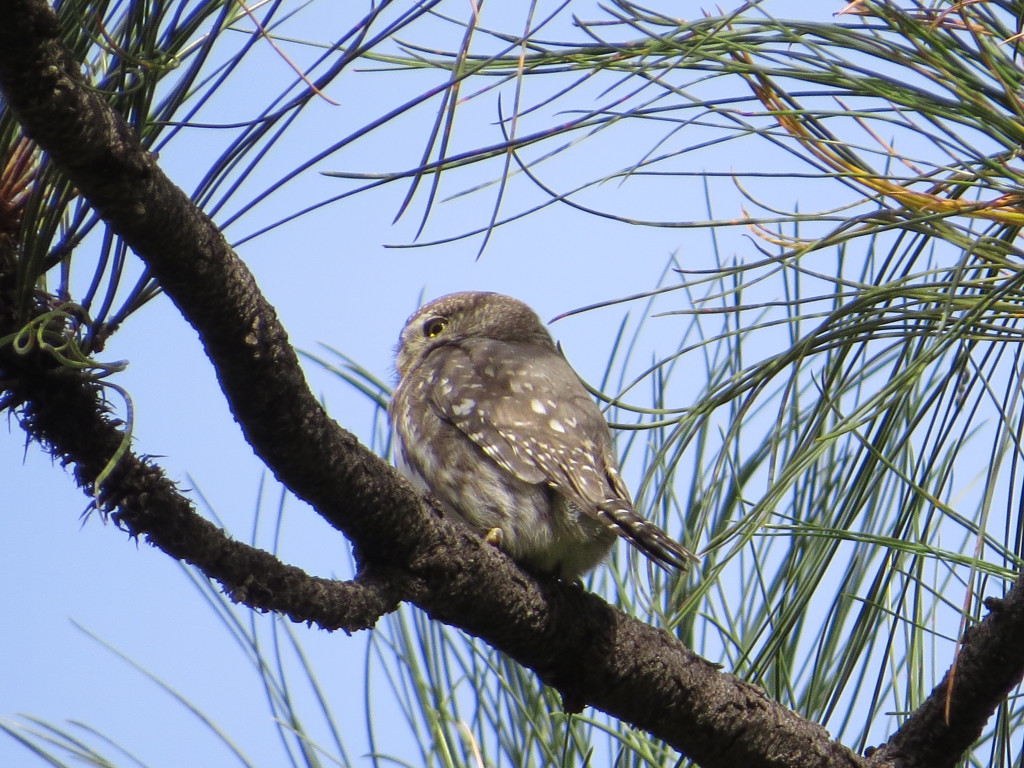
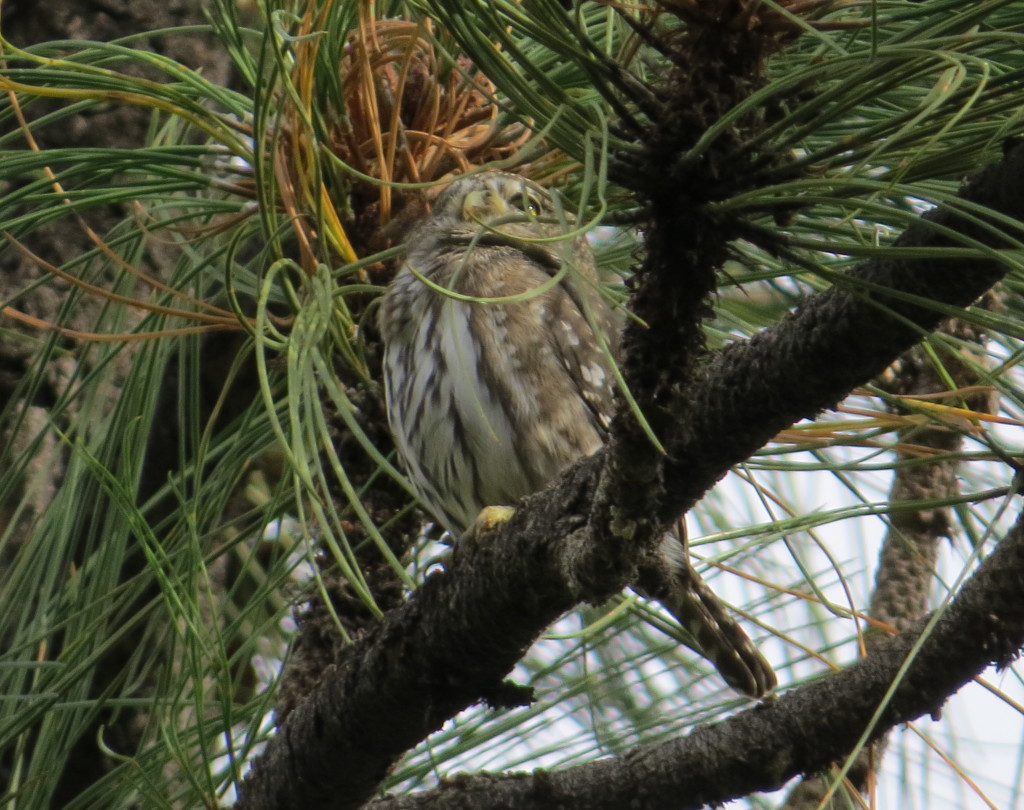
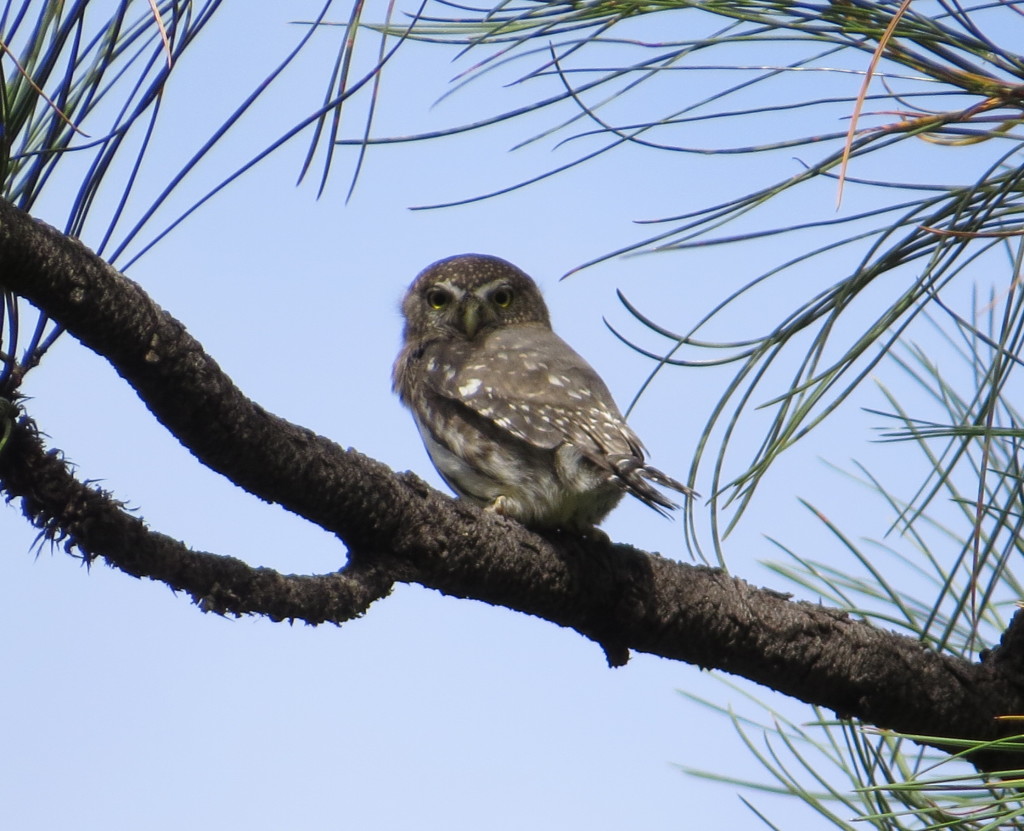 Time waits for no man, though, and neither do Rufous-capped Warblers. As I was photographing this cool Owl and trying for better angles, a Rufous-capped Warbler started singing nearby and Tommy was off again! In seconds Tommy got a visual on the bird and called me over. I’ve learned from Tommy and Gordon to first get a good look at a lifer with binoculars and then worry about a photo second. So that’s what I did. In no time at all, I also saw the Rufous-capped Warbler pop up for a second and got to see that amazingly yellow throat.
Time waits for no man, though, and neither do Rufous-capped Warblers. As I was photographing this cool Owl and trying for better angles, a Rufous-capped Warbler started singing nearby and Tommy was off again! In seconds Tommy got a visual on the bird and called me over. I’ve learned from Tommy and Gordon to first get a good look at a lifer with binoculars and then worry about a photo second. So that’s what I did. In no time at all, I also saw the Rufous-capped Warbler pop up for a second and got to see that amazingly yellow throat.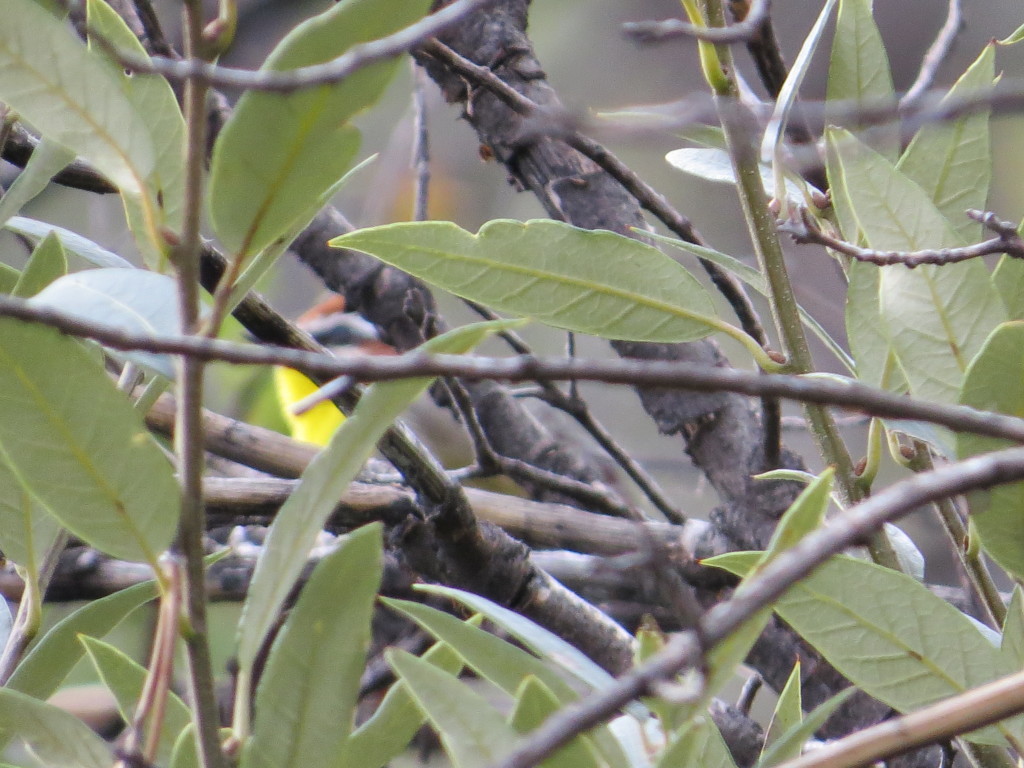
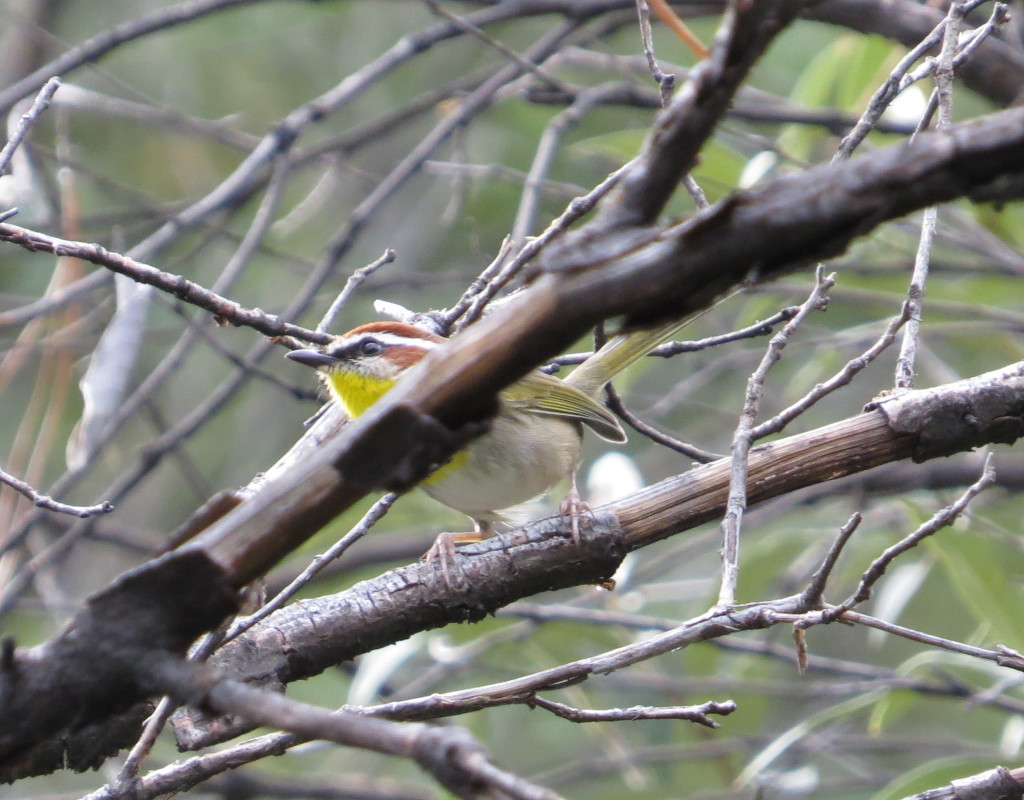
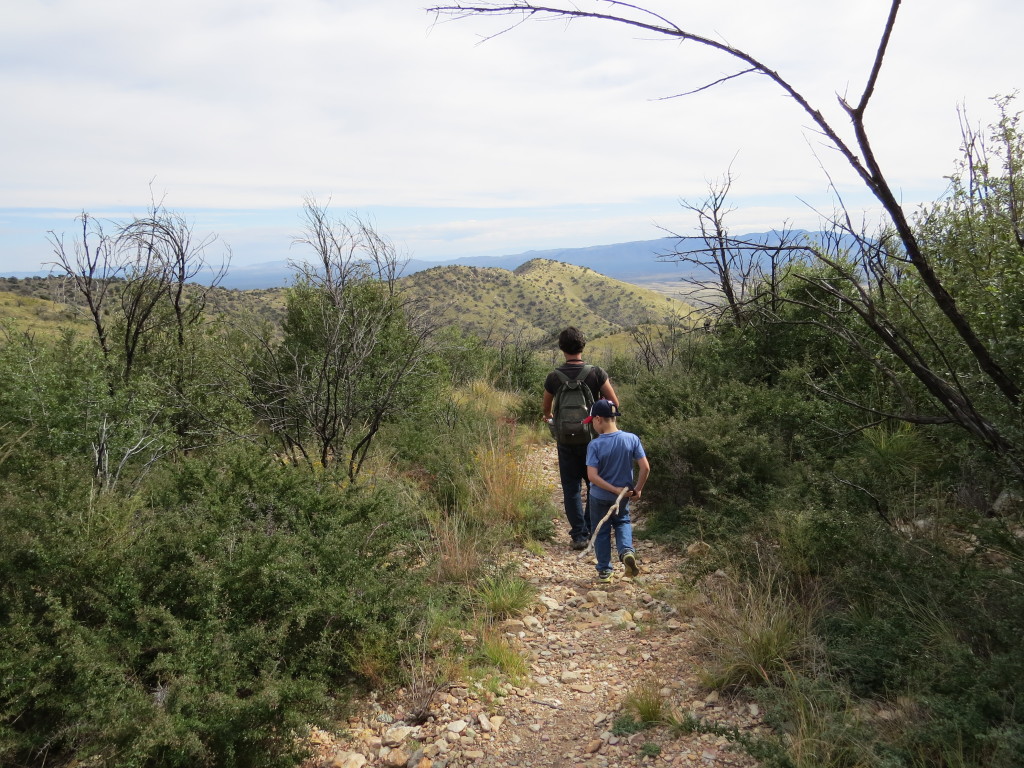 …and then go to next-door Miller Canyon and Ash Canyon for even more adventure! You don’t want to miss it–there will be coon dogs, guns, and yes, more cool lifers.
…and then go to next-door Miller Canyon and Ash Canyon for even more adventure! You don’t want to miss it–there will be coon dogs, guns, and yes, more cool lifers.